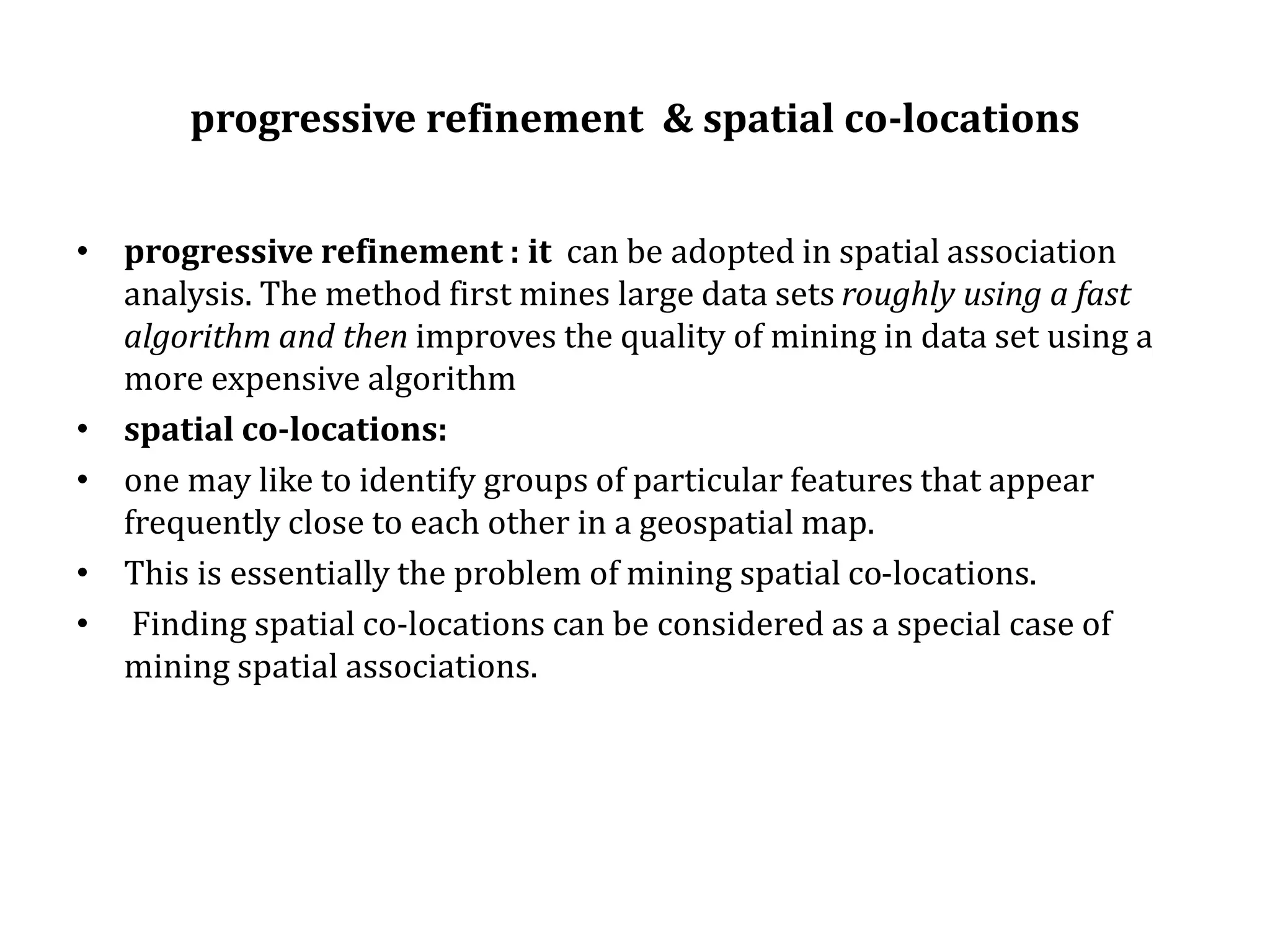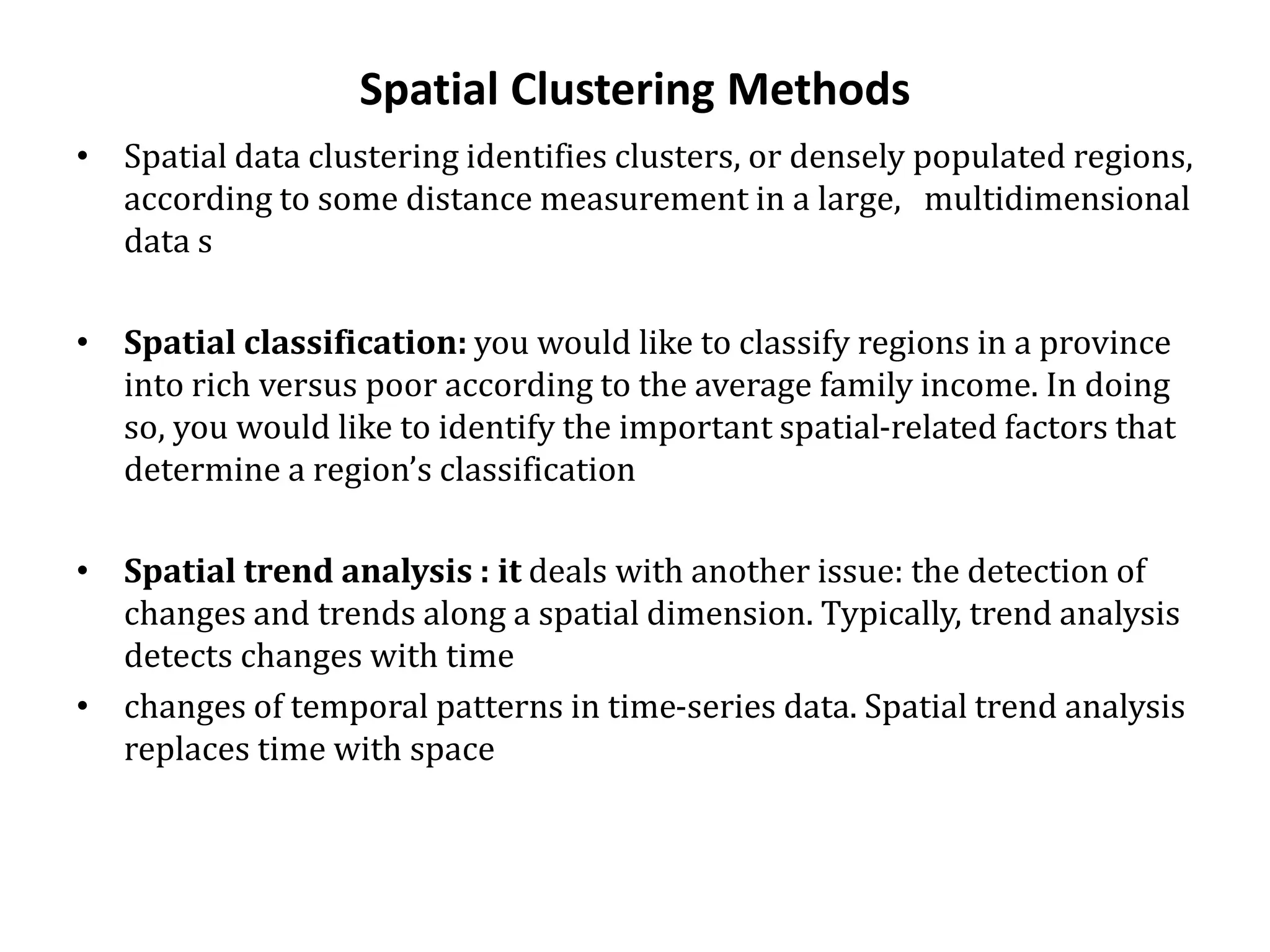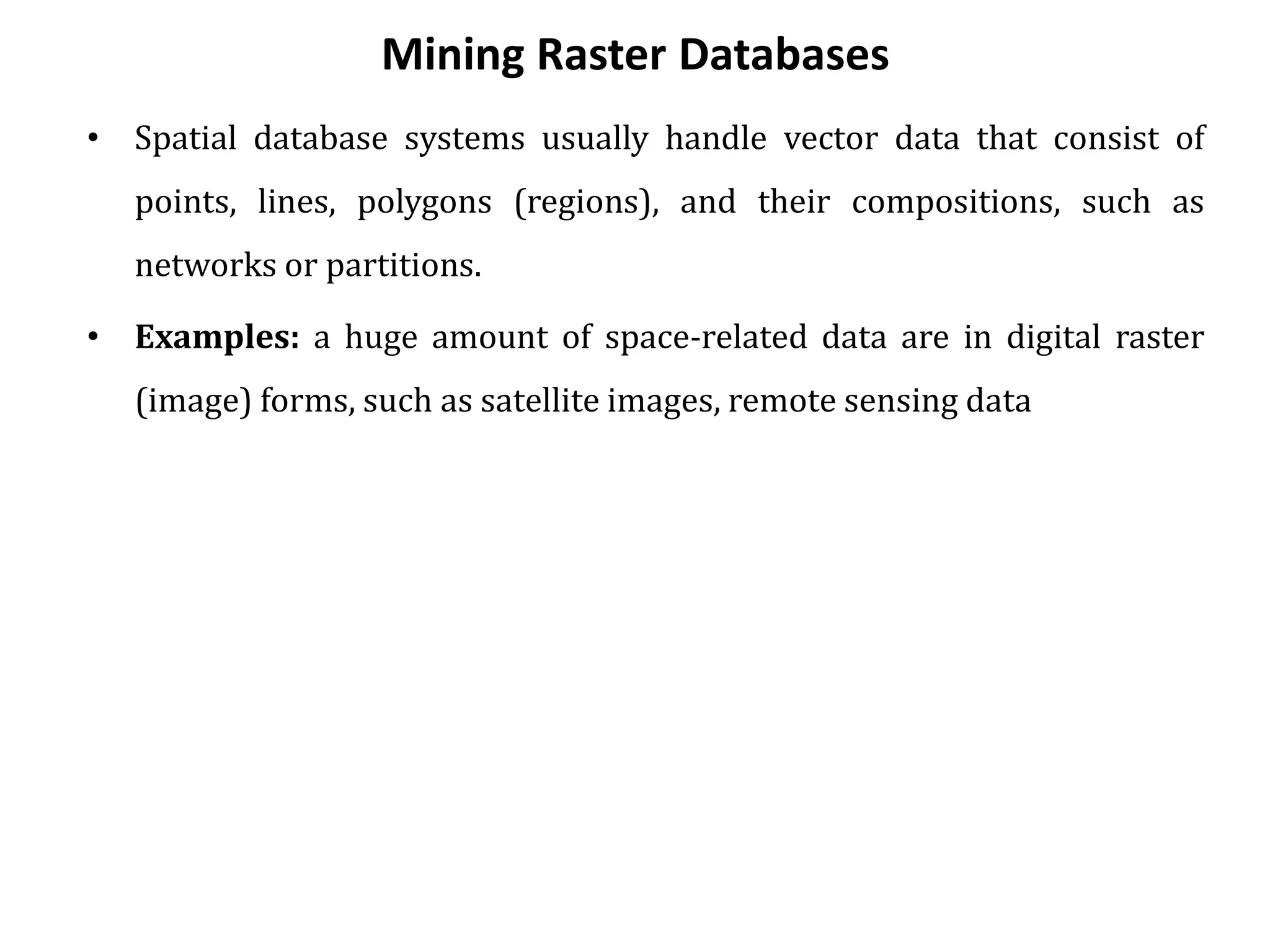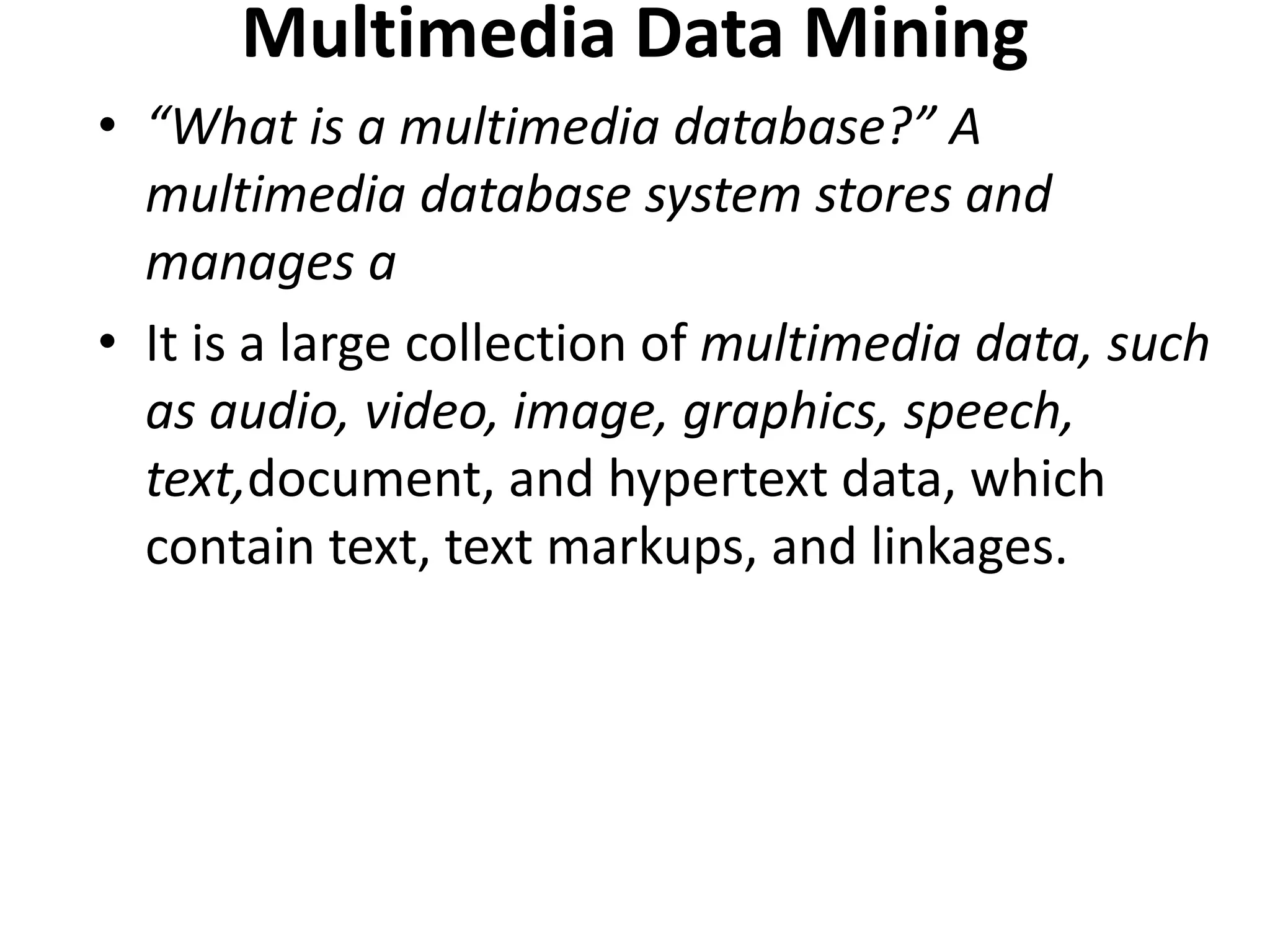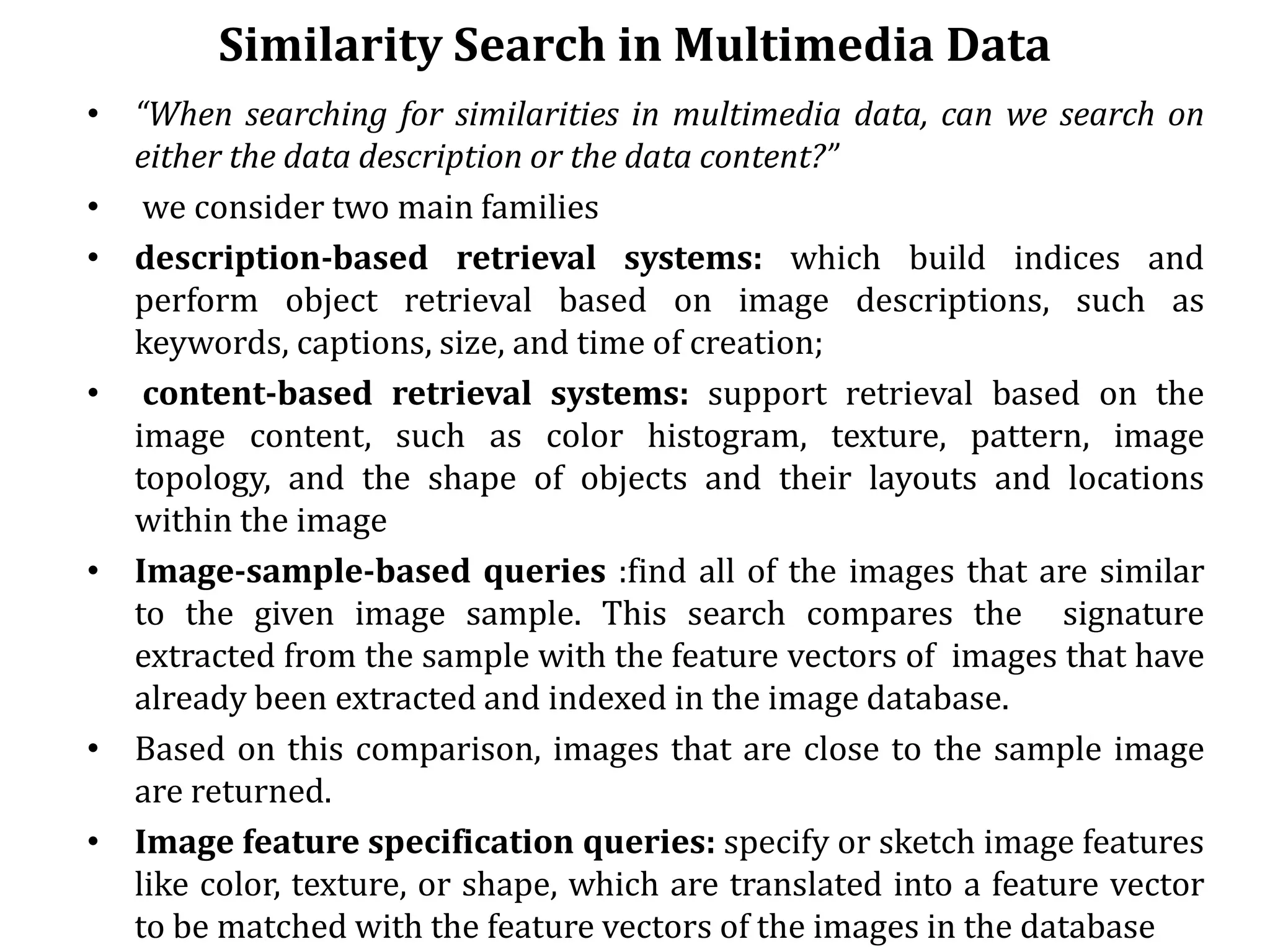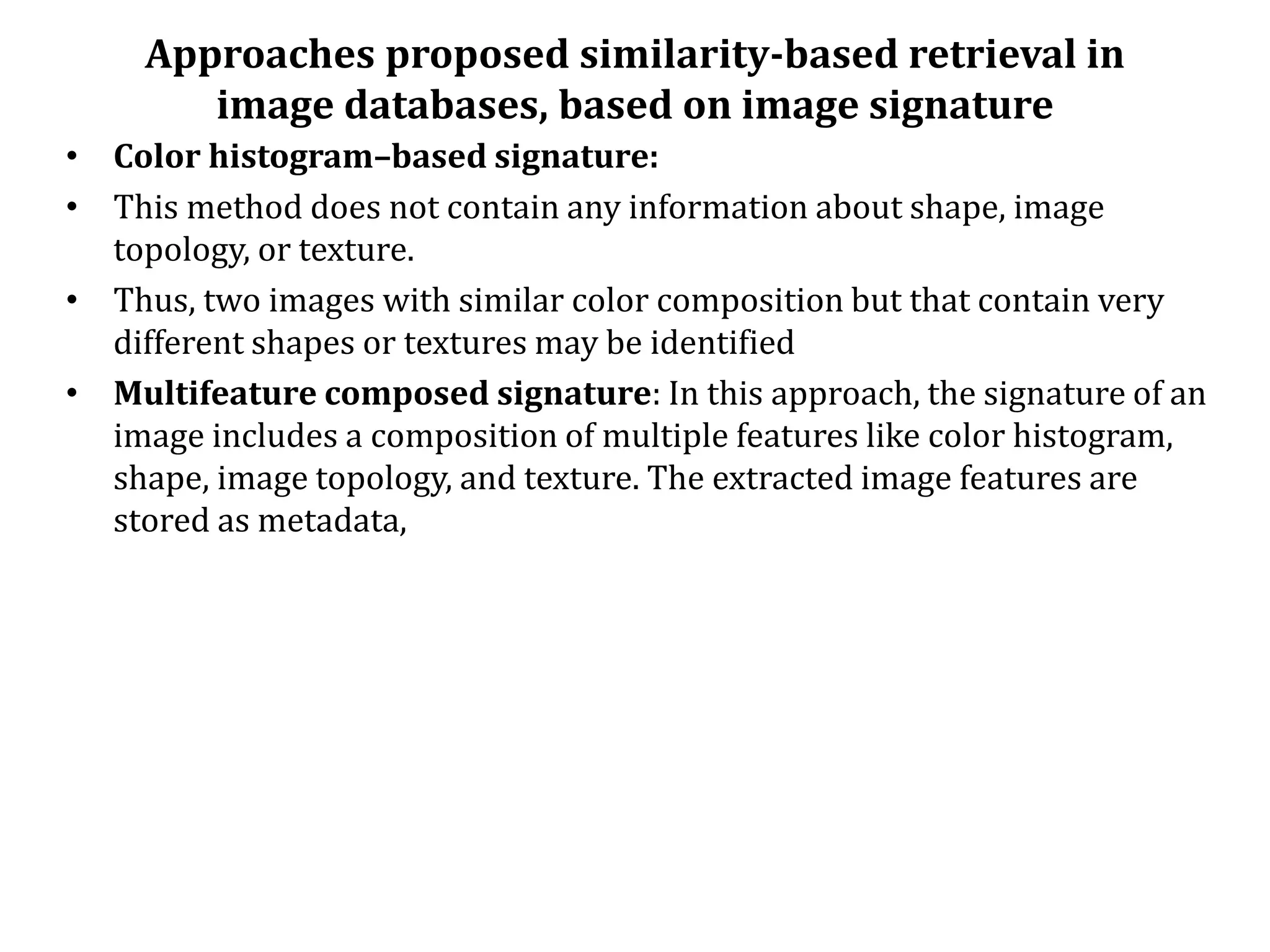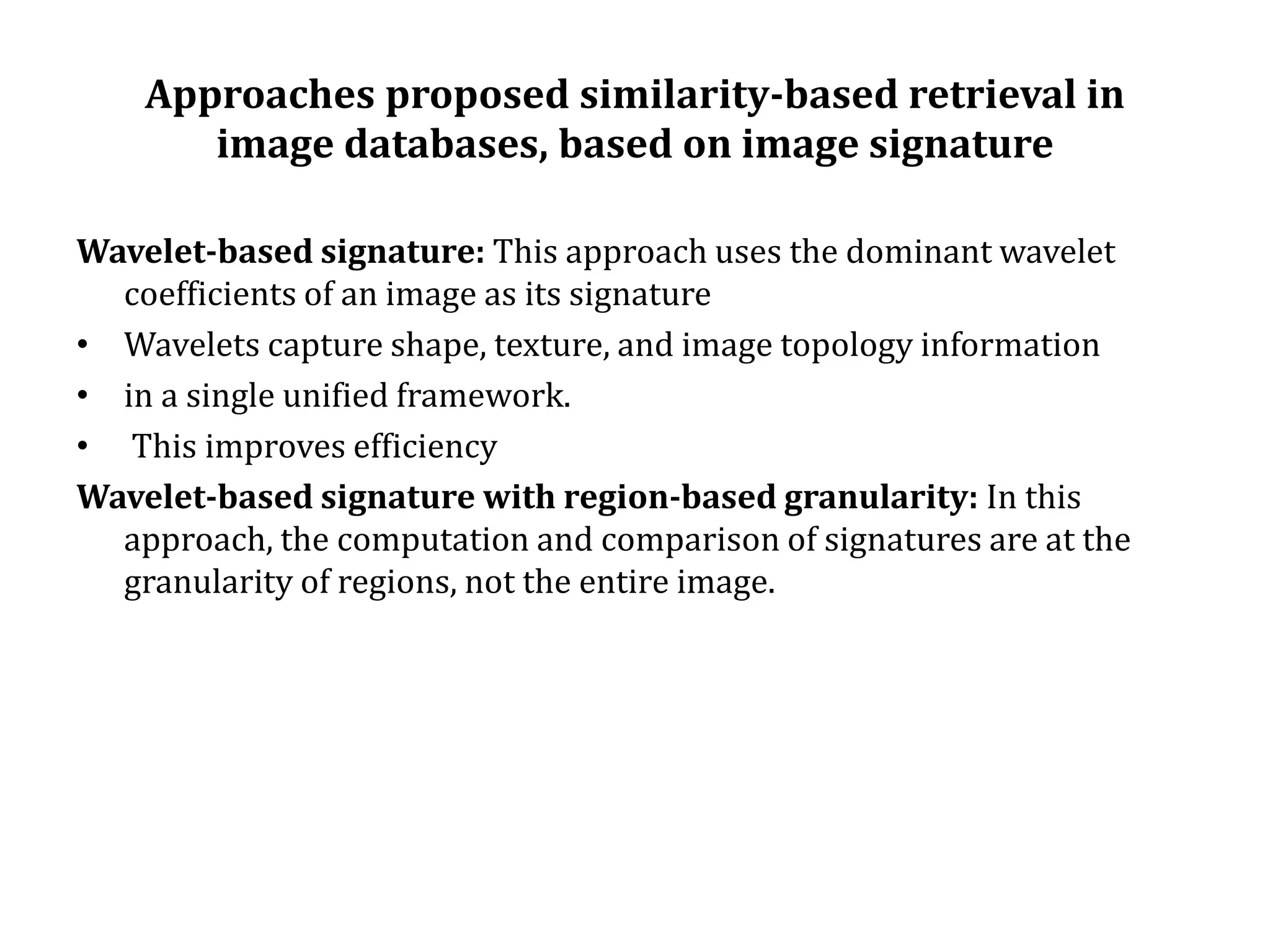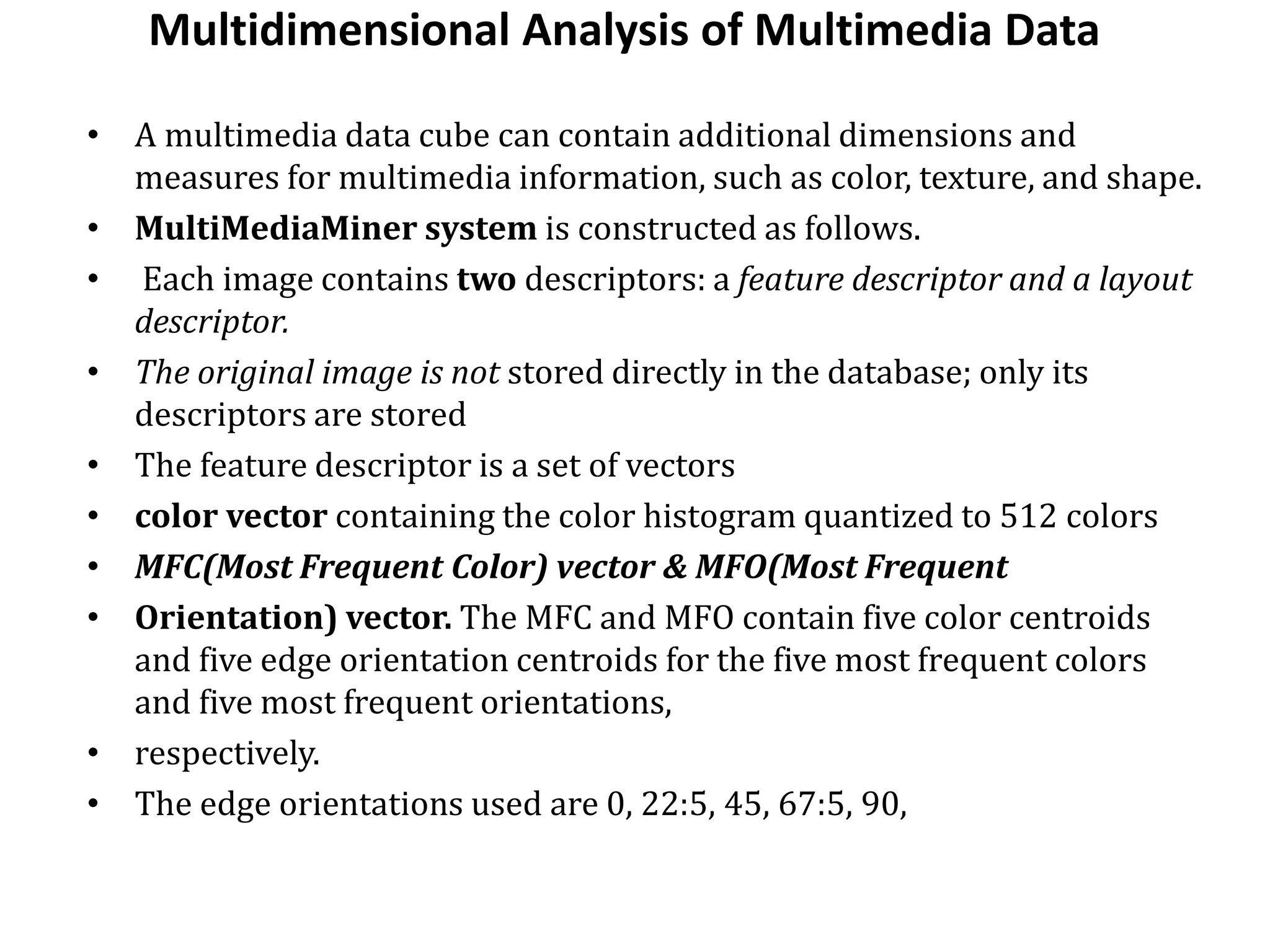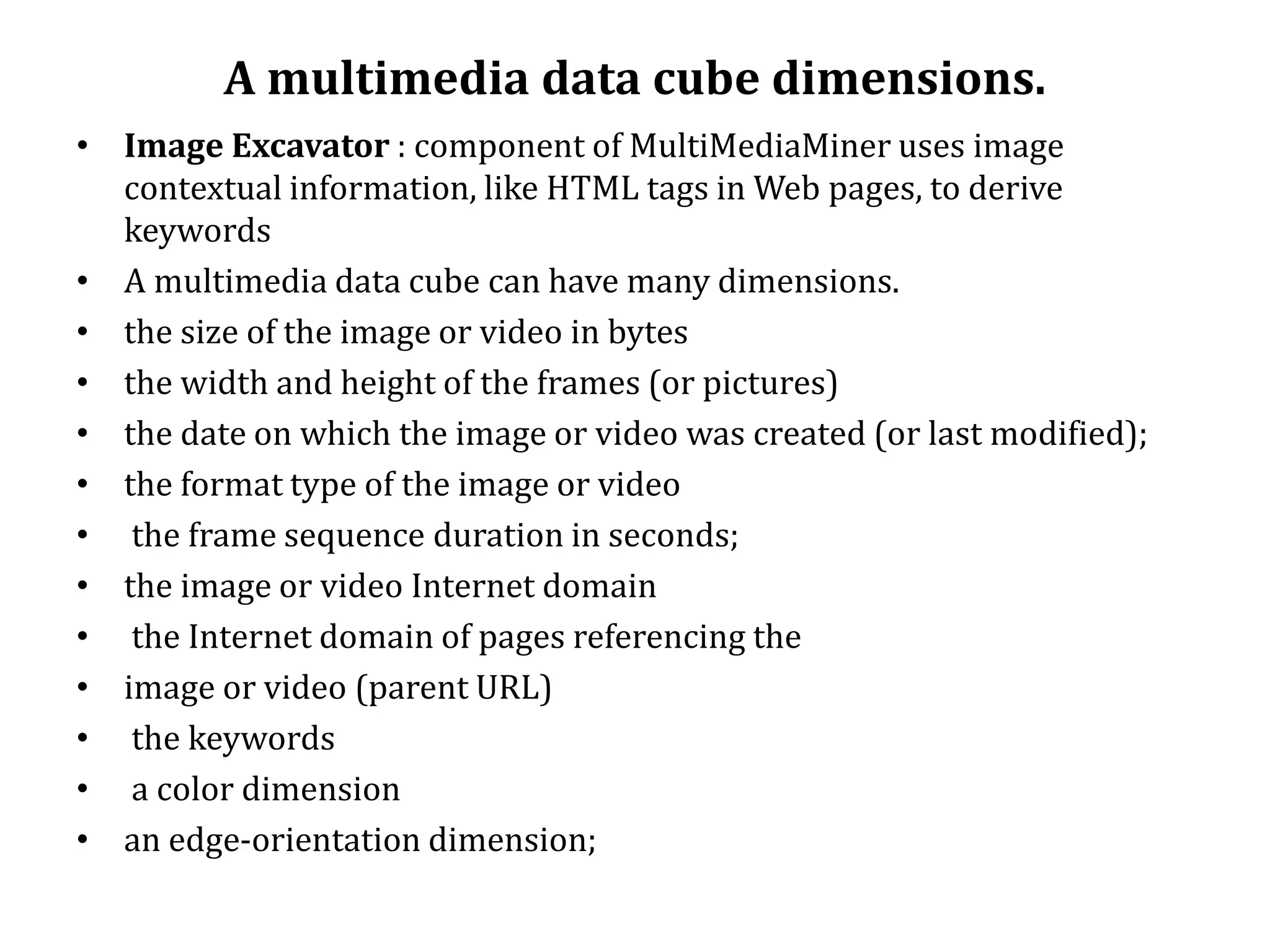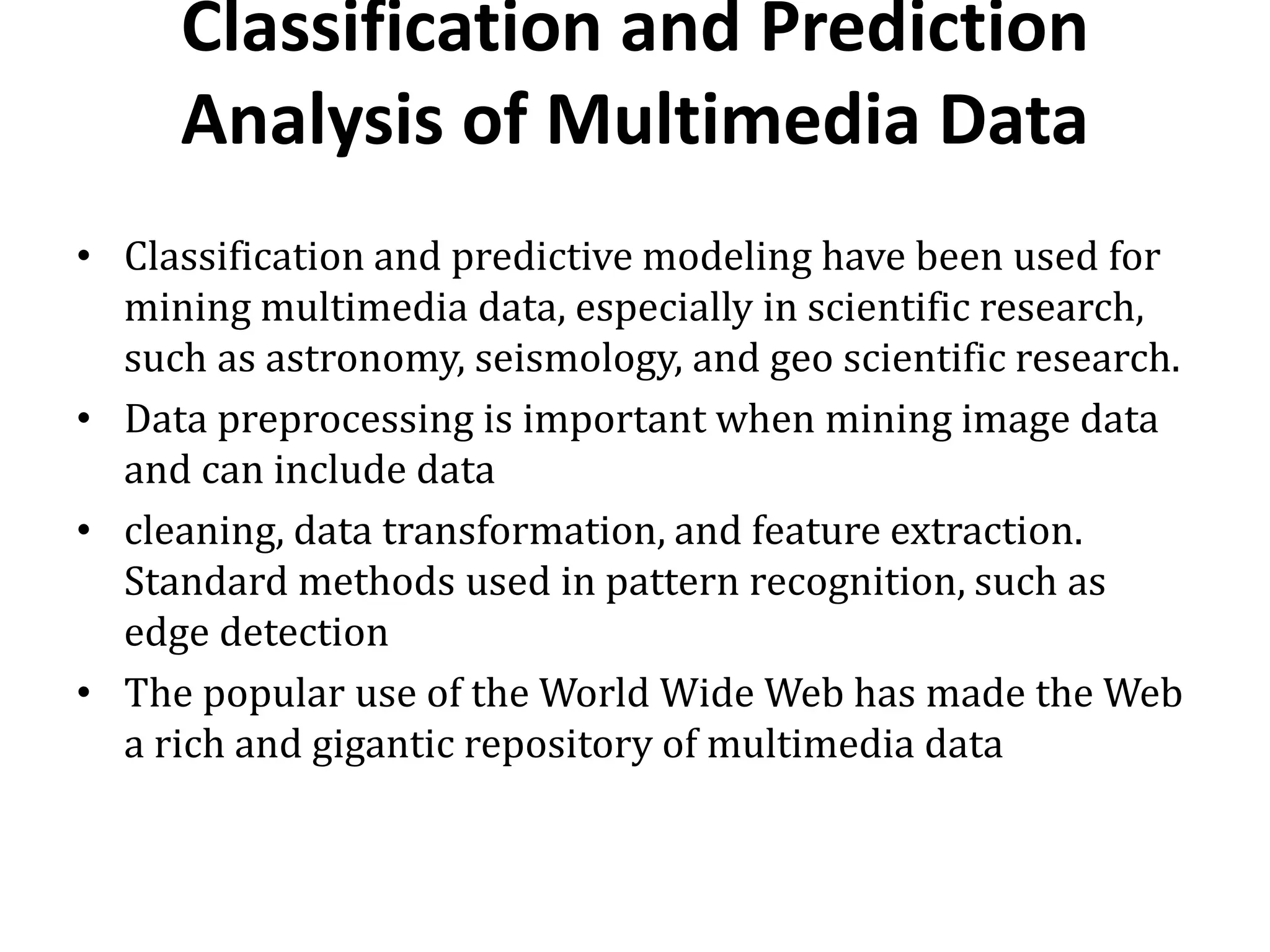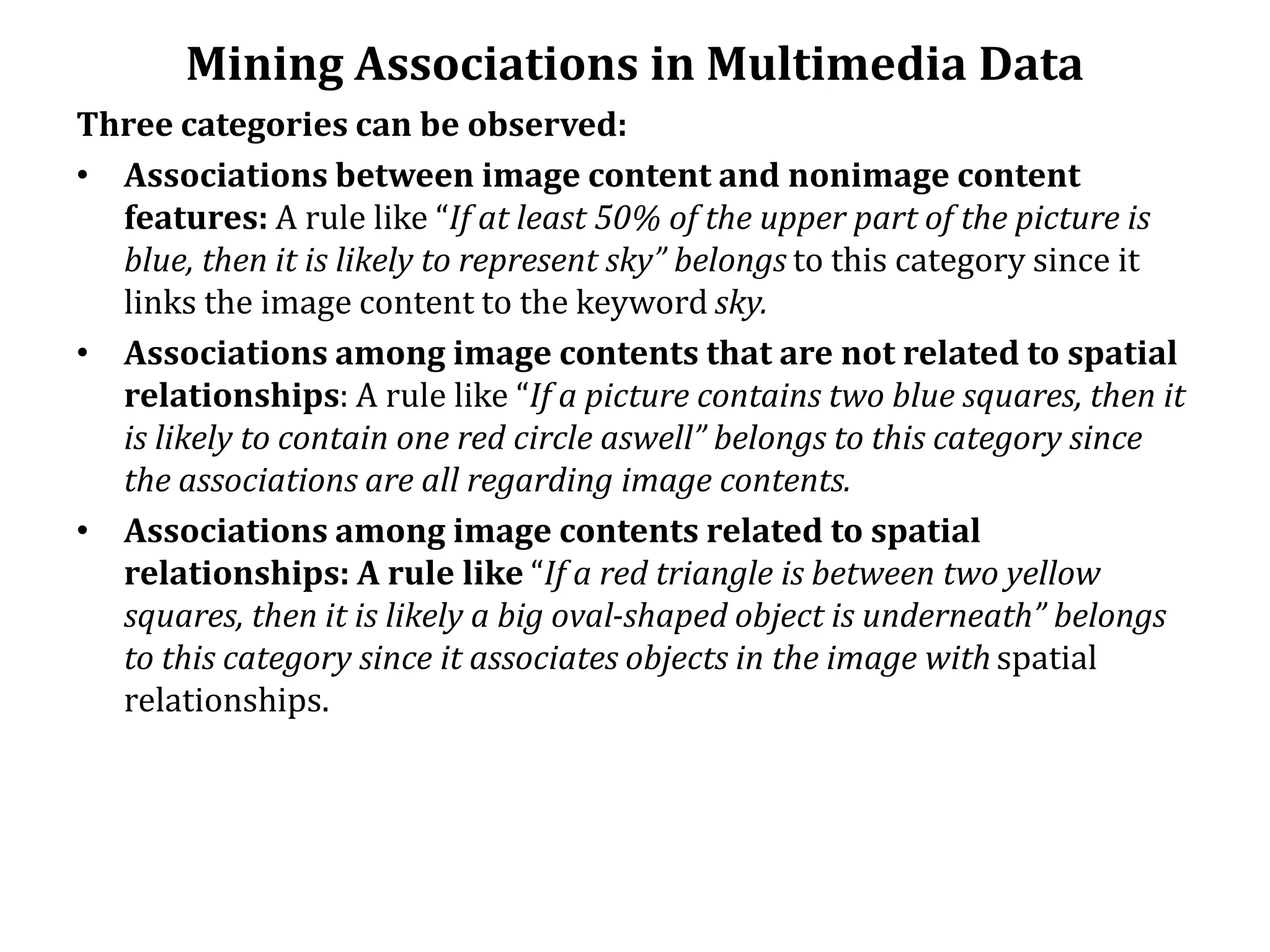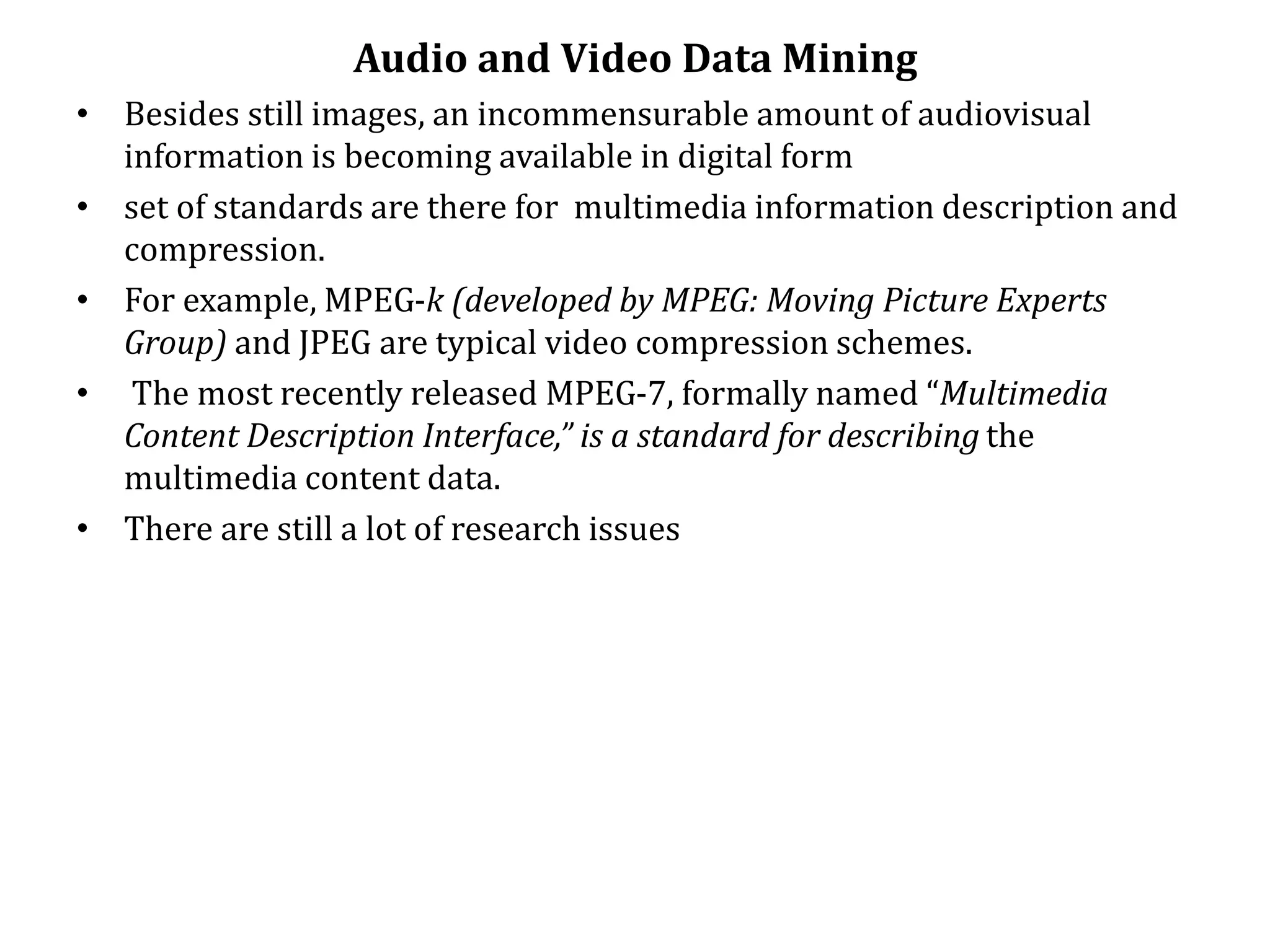The document introduces various applications of data mining including finance, retail, telecommunications, biology, science, engineering, and intrusion detection. It then provides more details on data mining applications in each of these domains. For financial data analysis, it discusses constructing data warehouses, loan prediction, customer segmentation for marketing, and detecting money laundering. For retail, it discusses data warehouses, sales analysis, customer retention, and product recommendations. For telecommunications, it discusses network analysis, fraud detection, and improving resource usage.
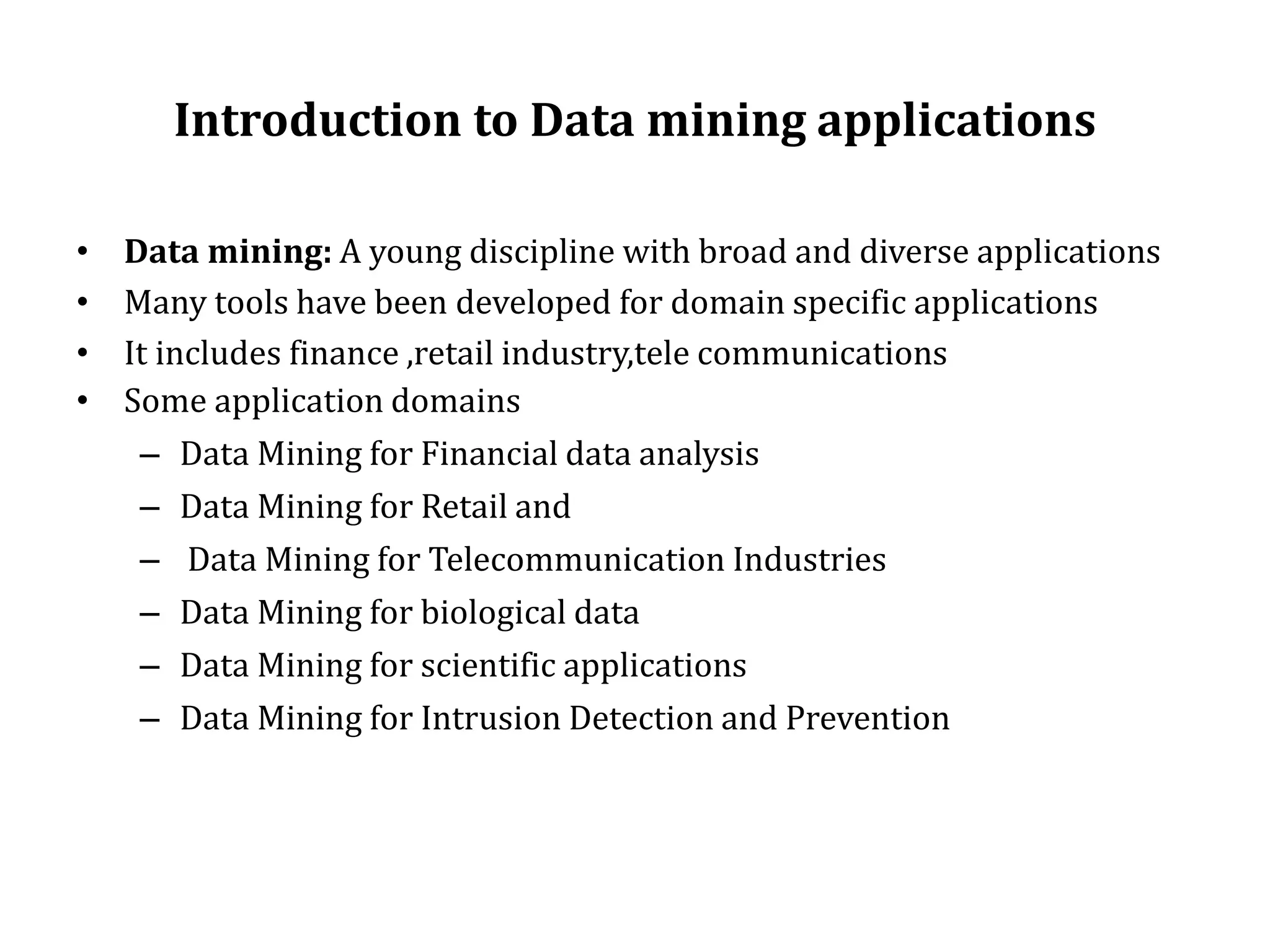
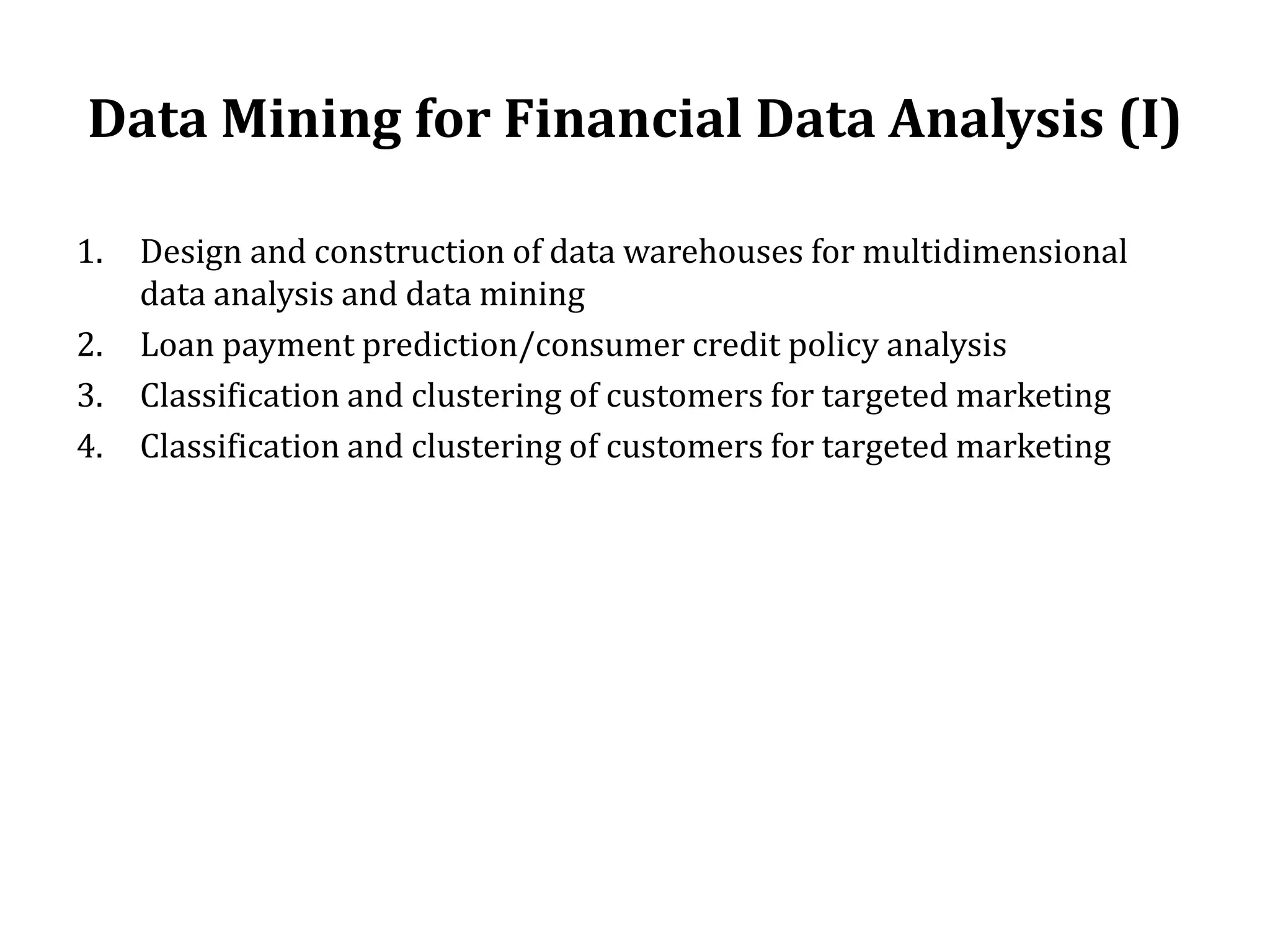
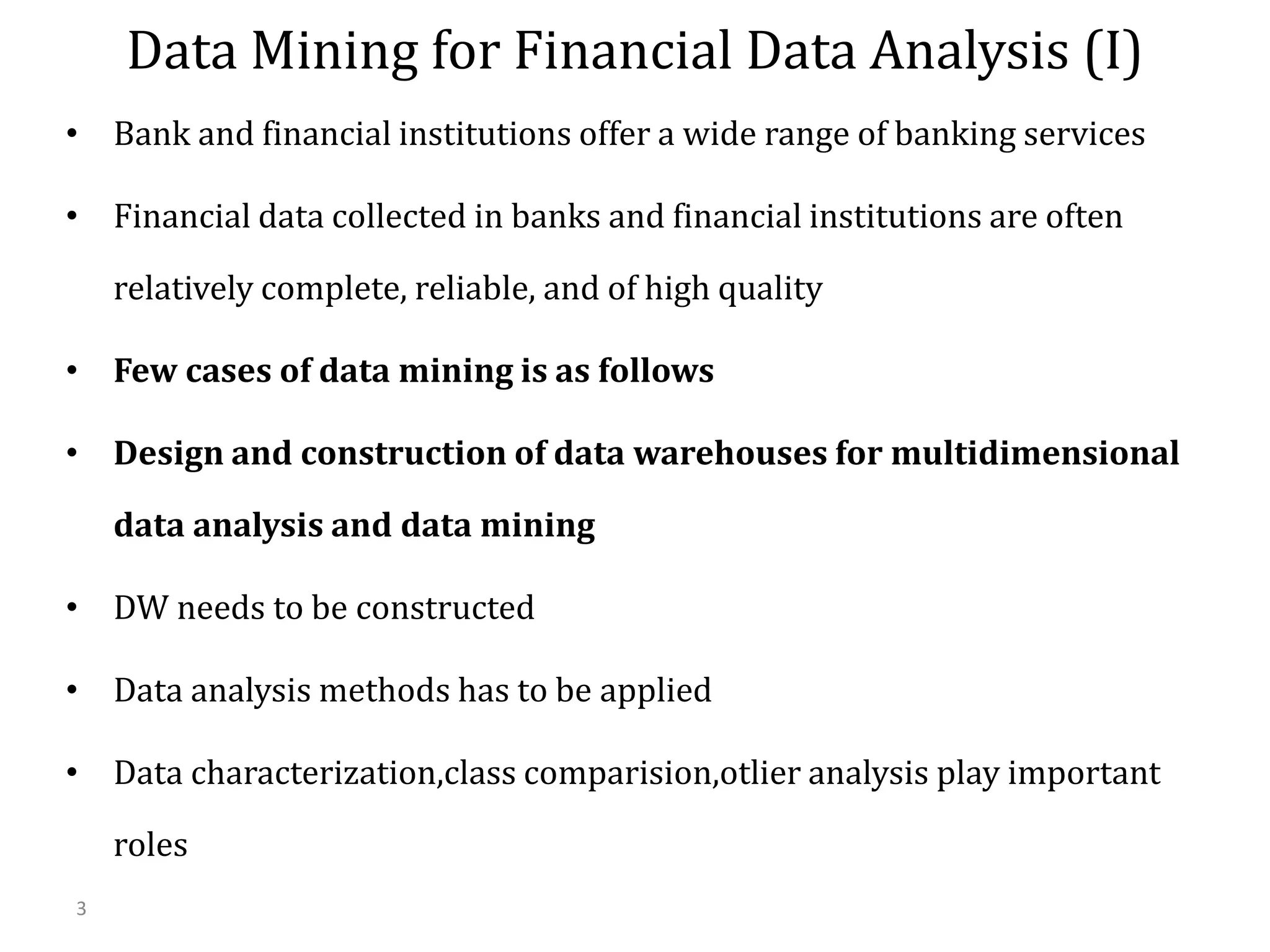
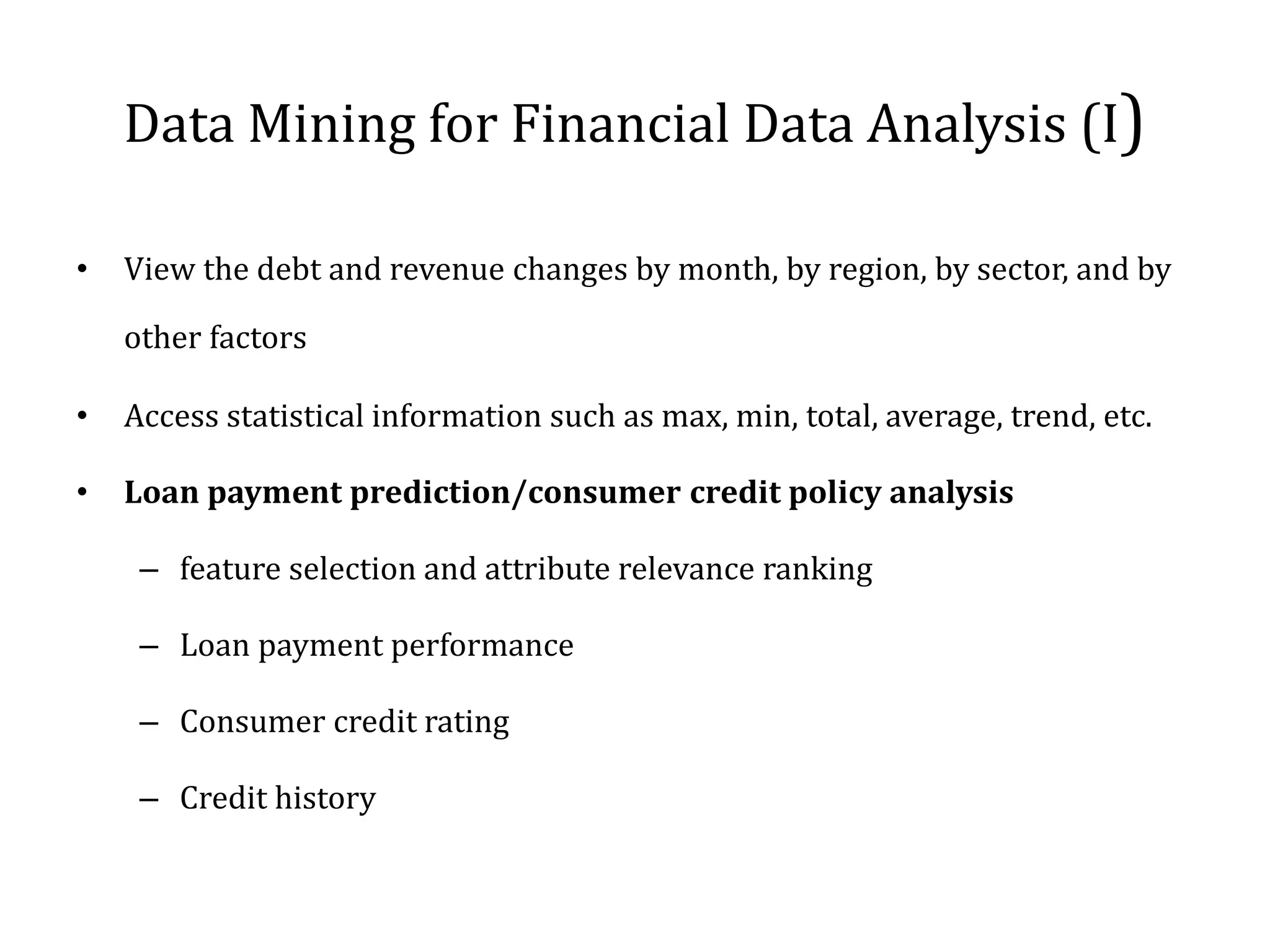
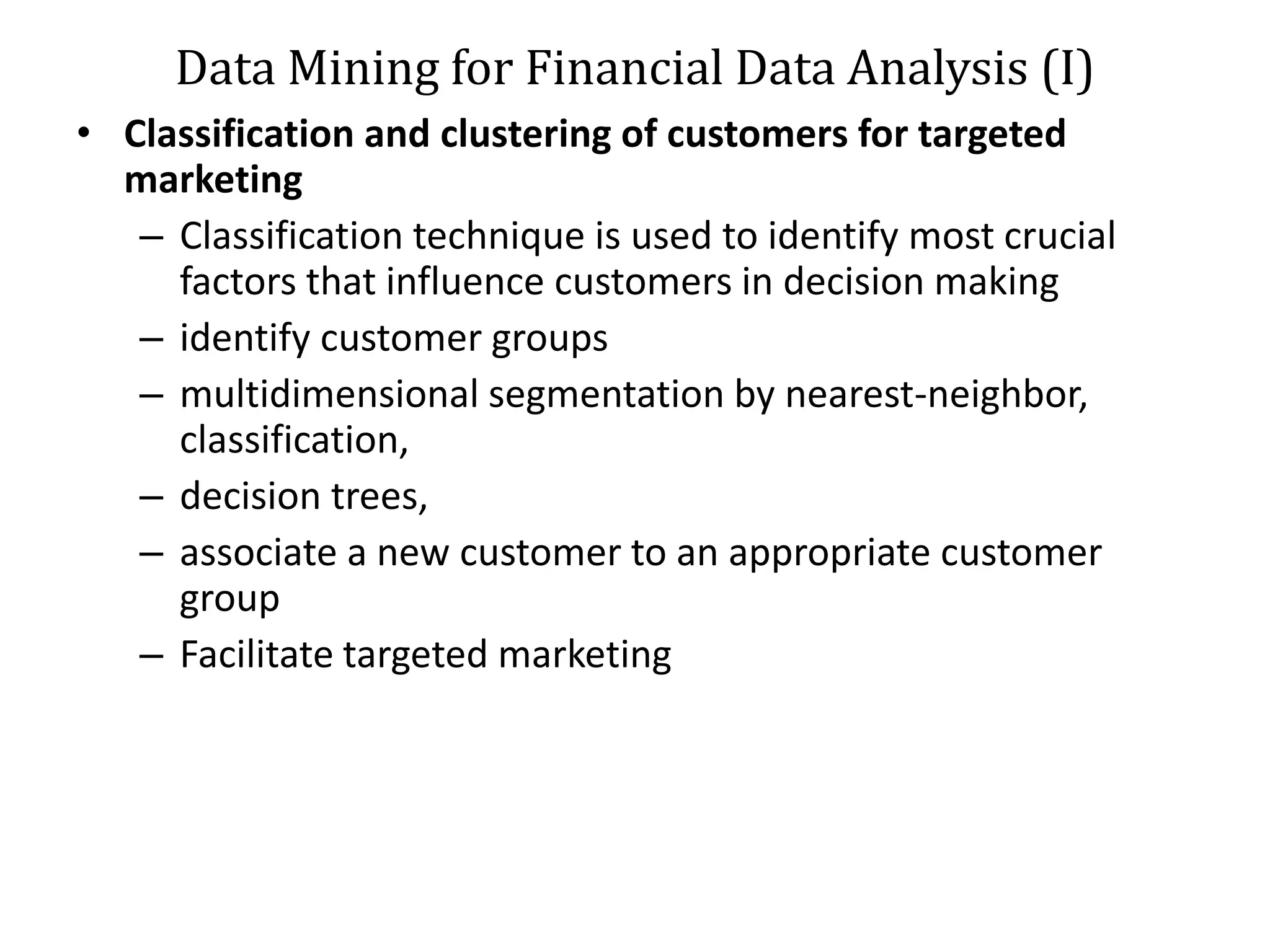
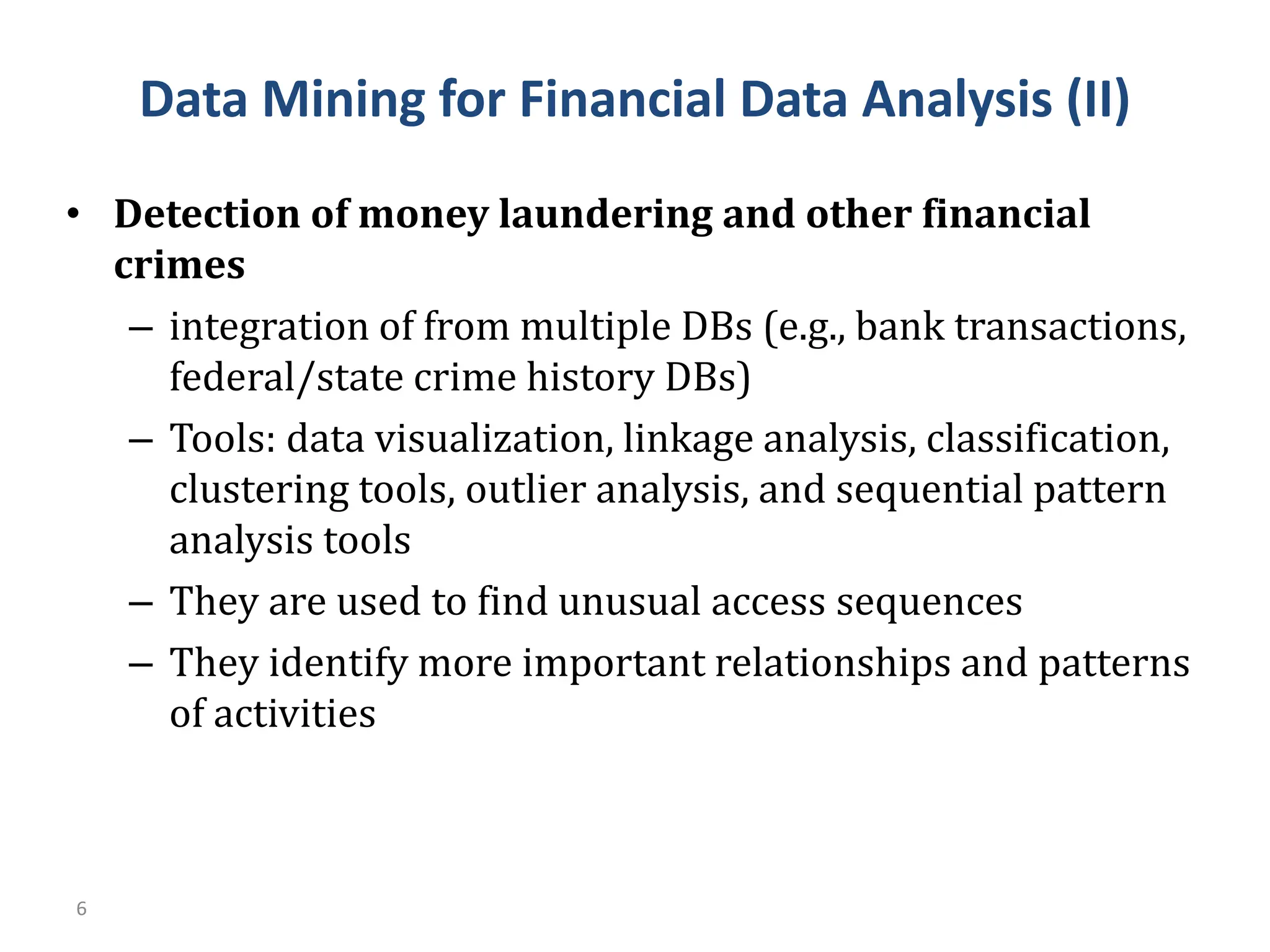
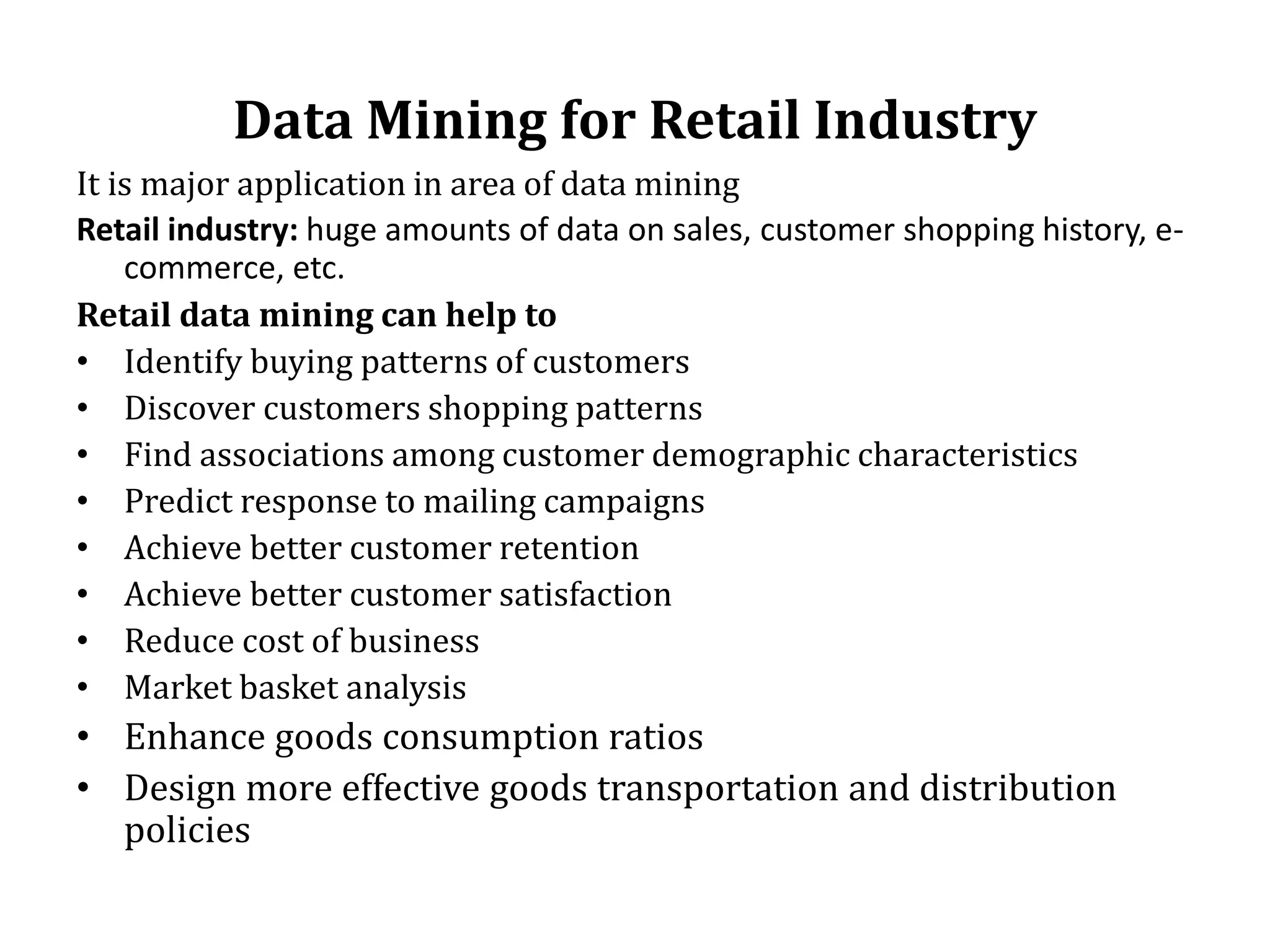
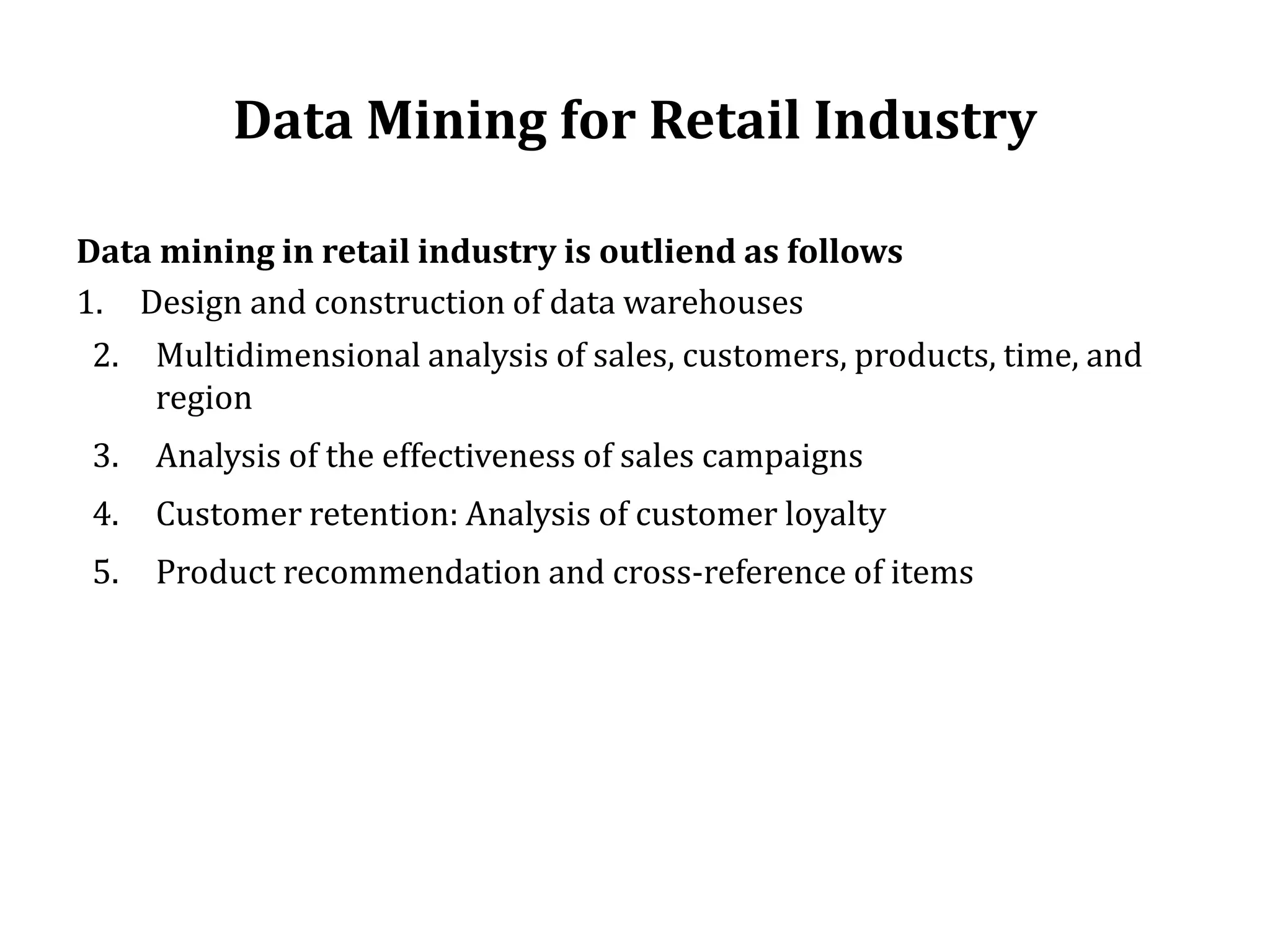
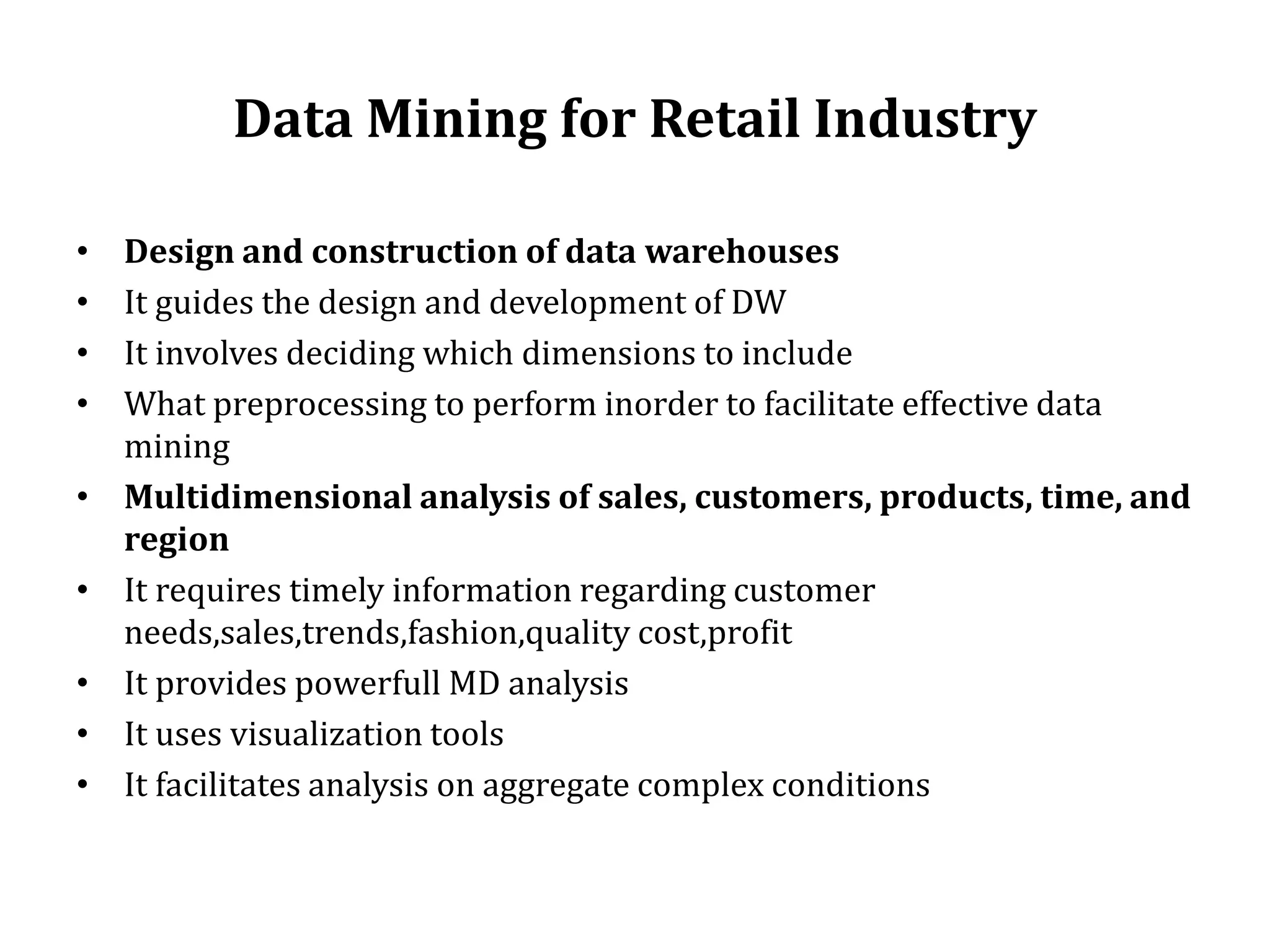
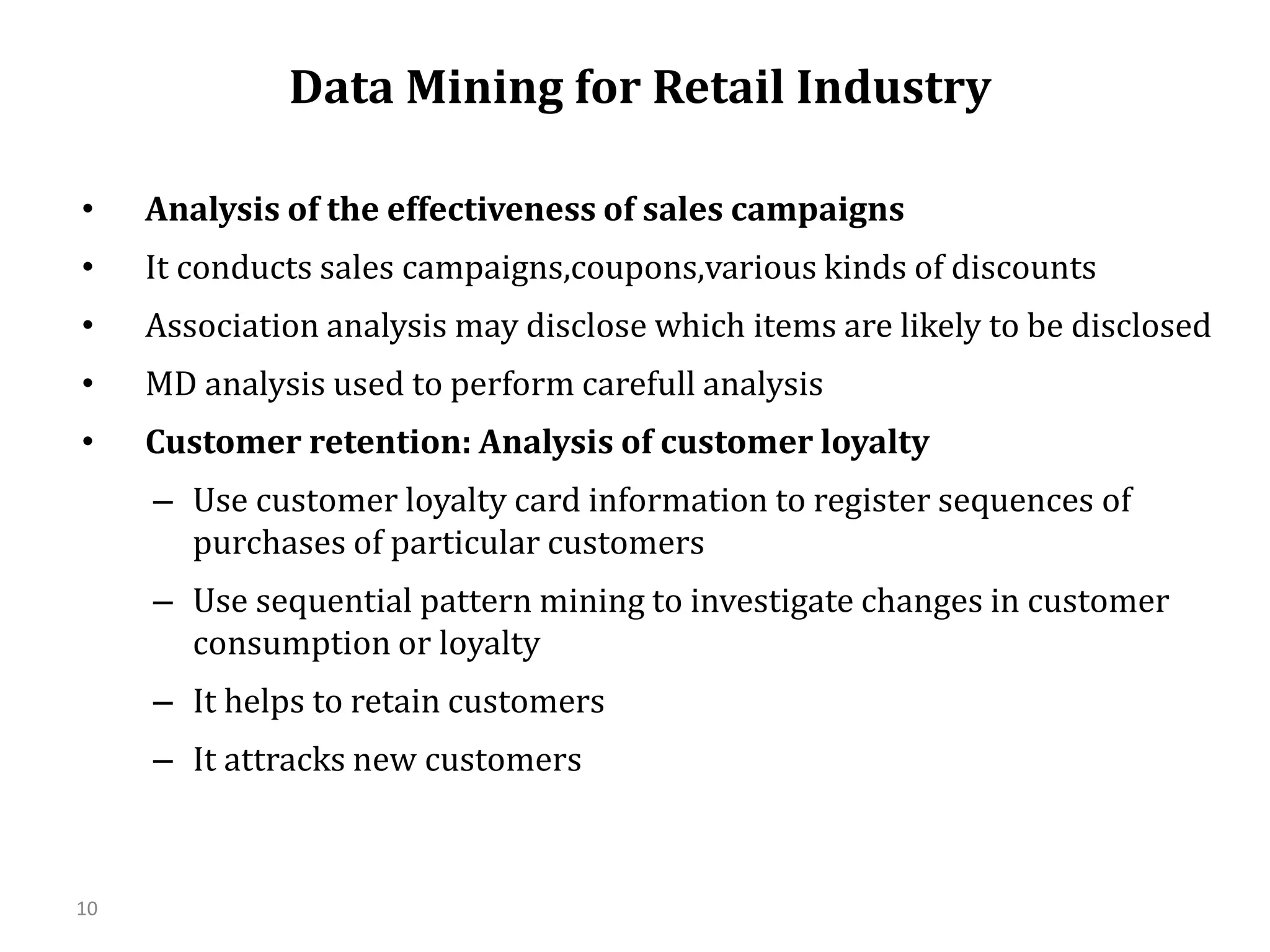
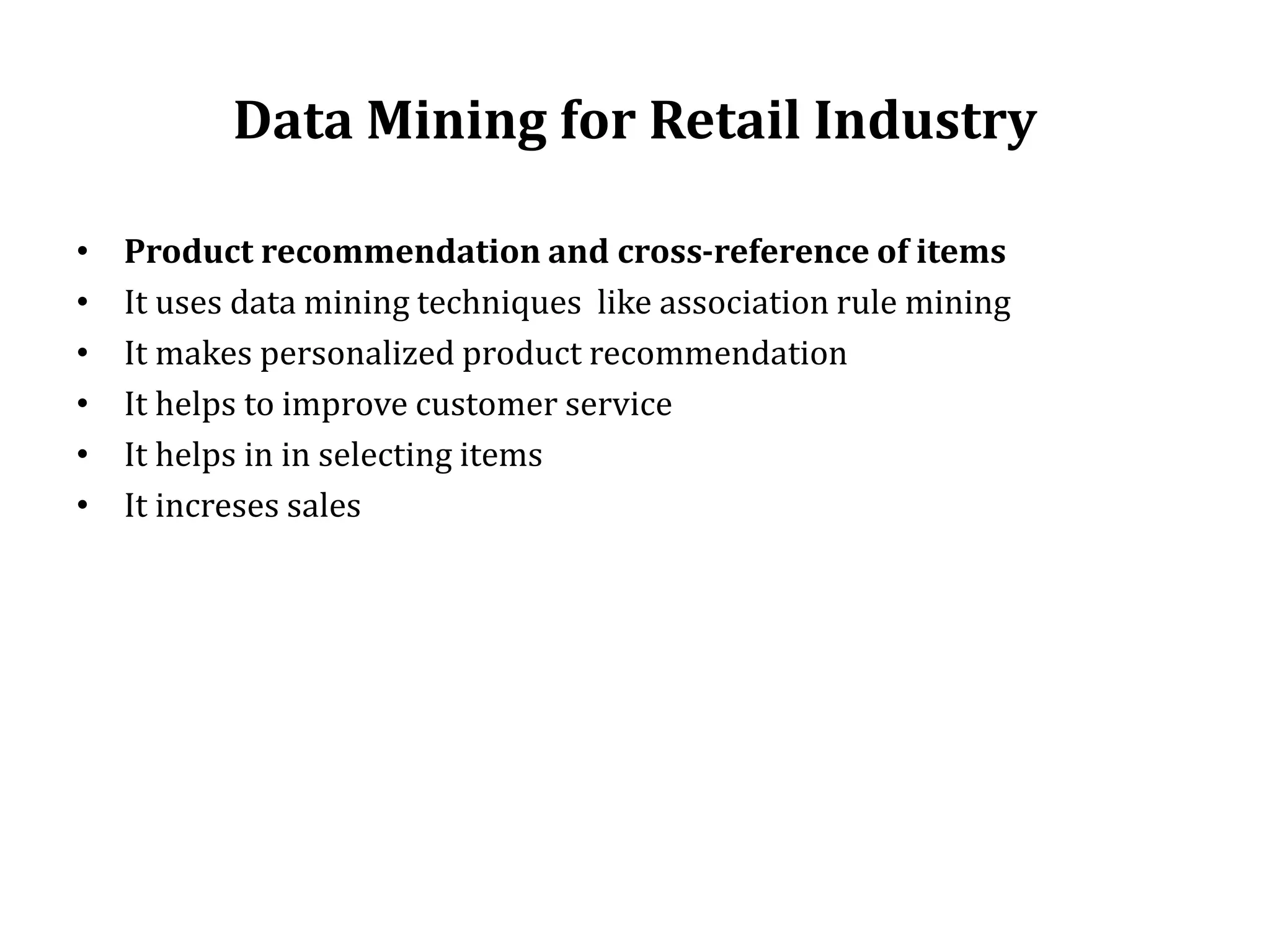
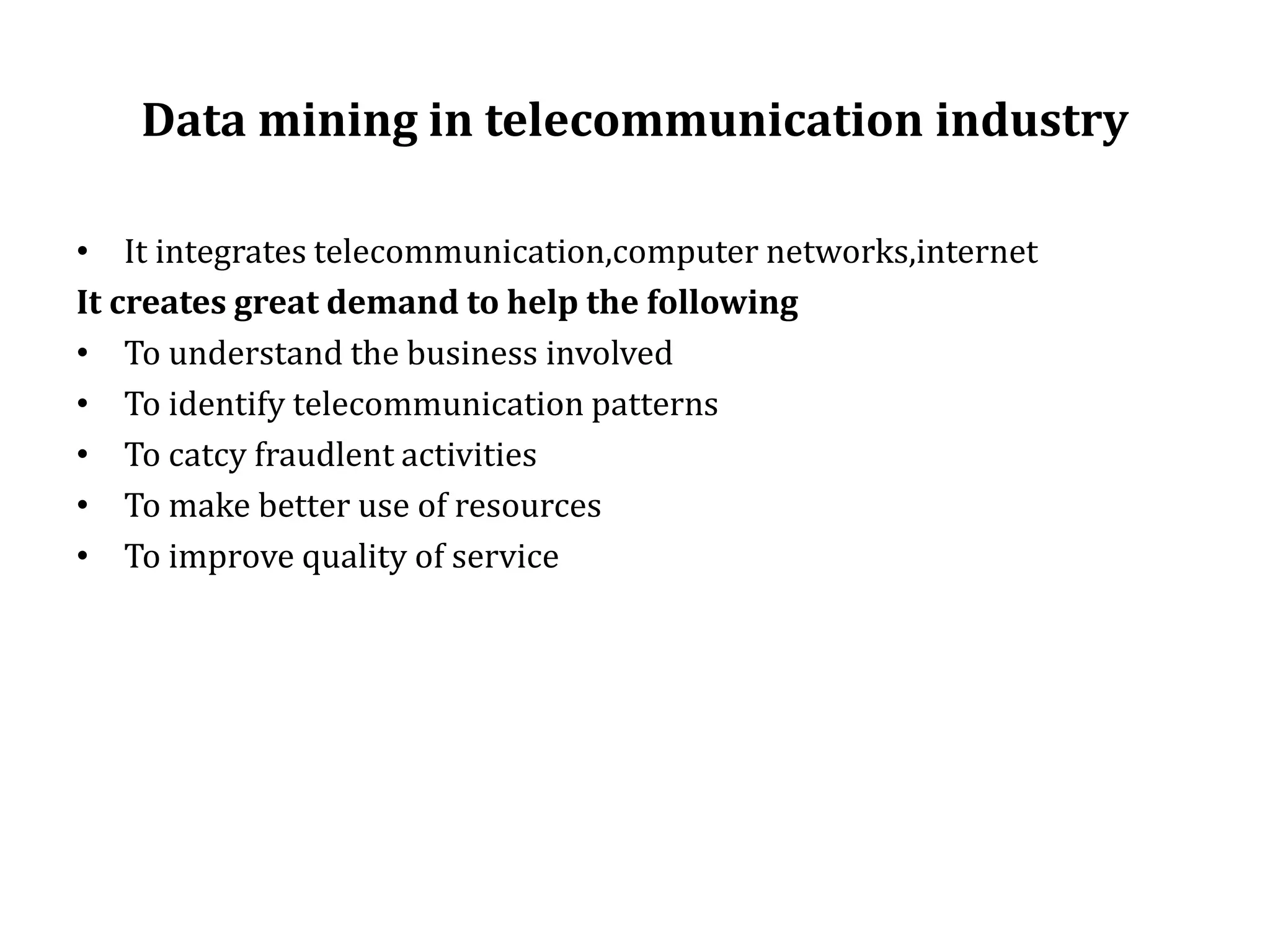
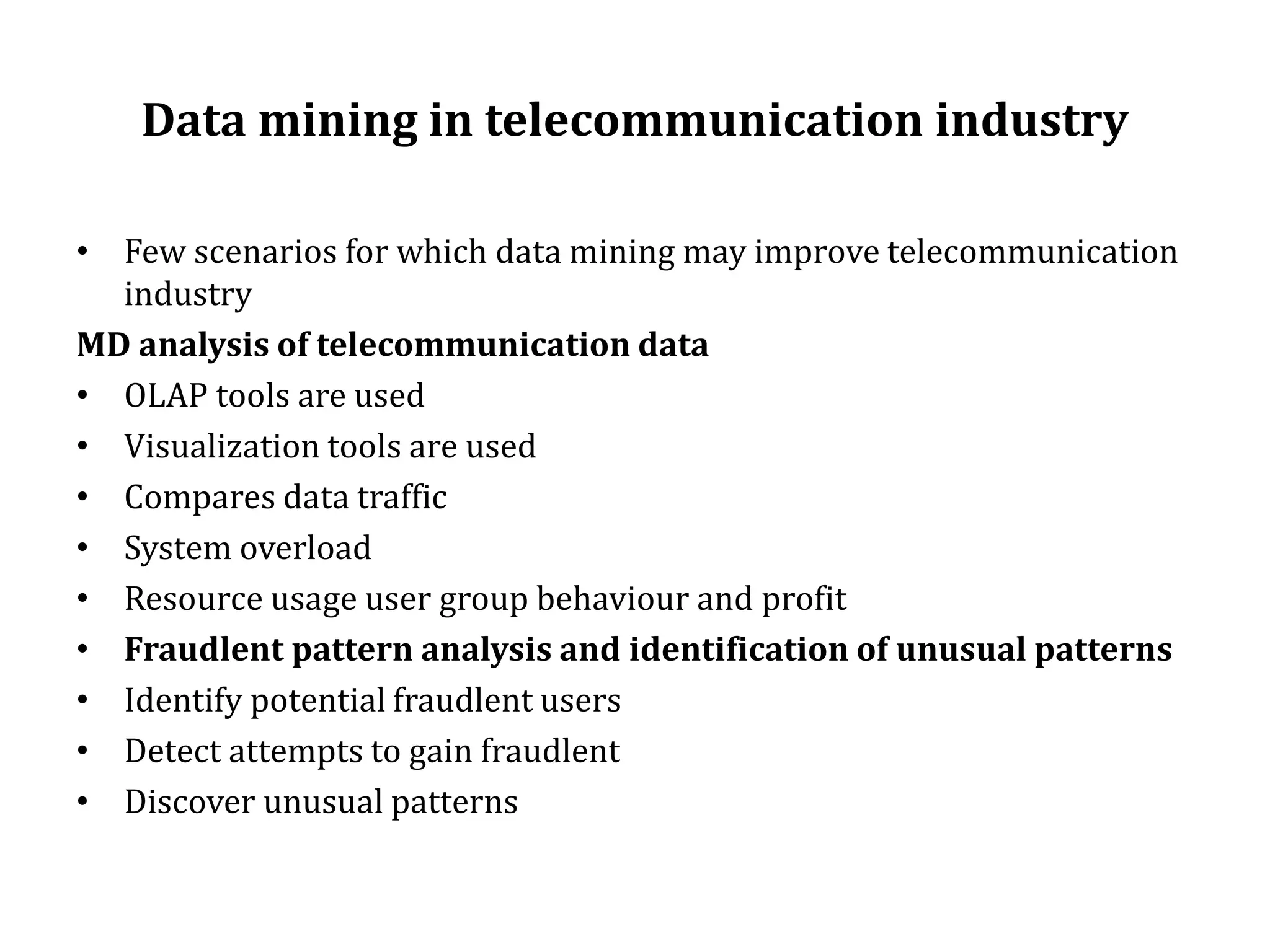
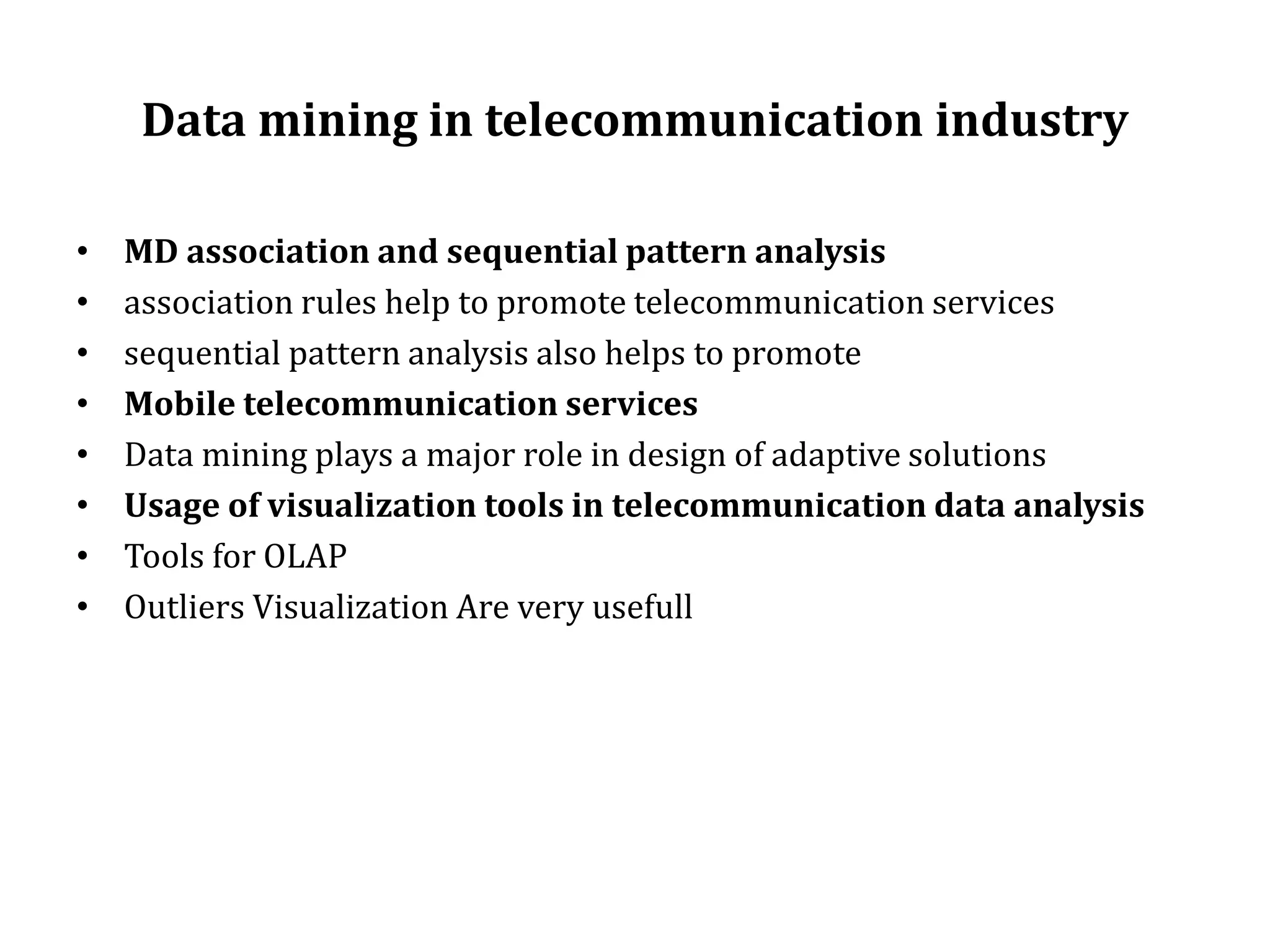
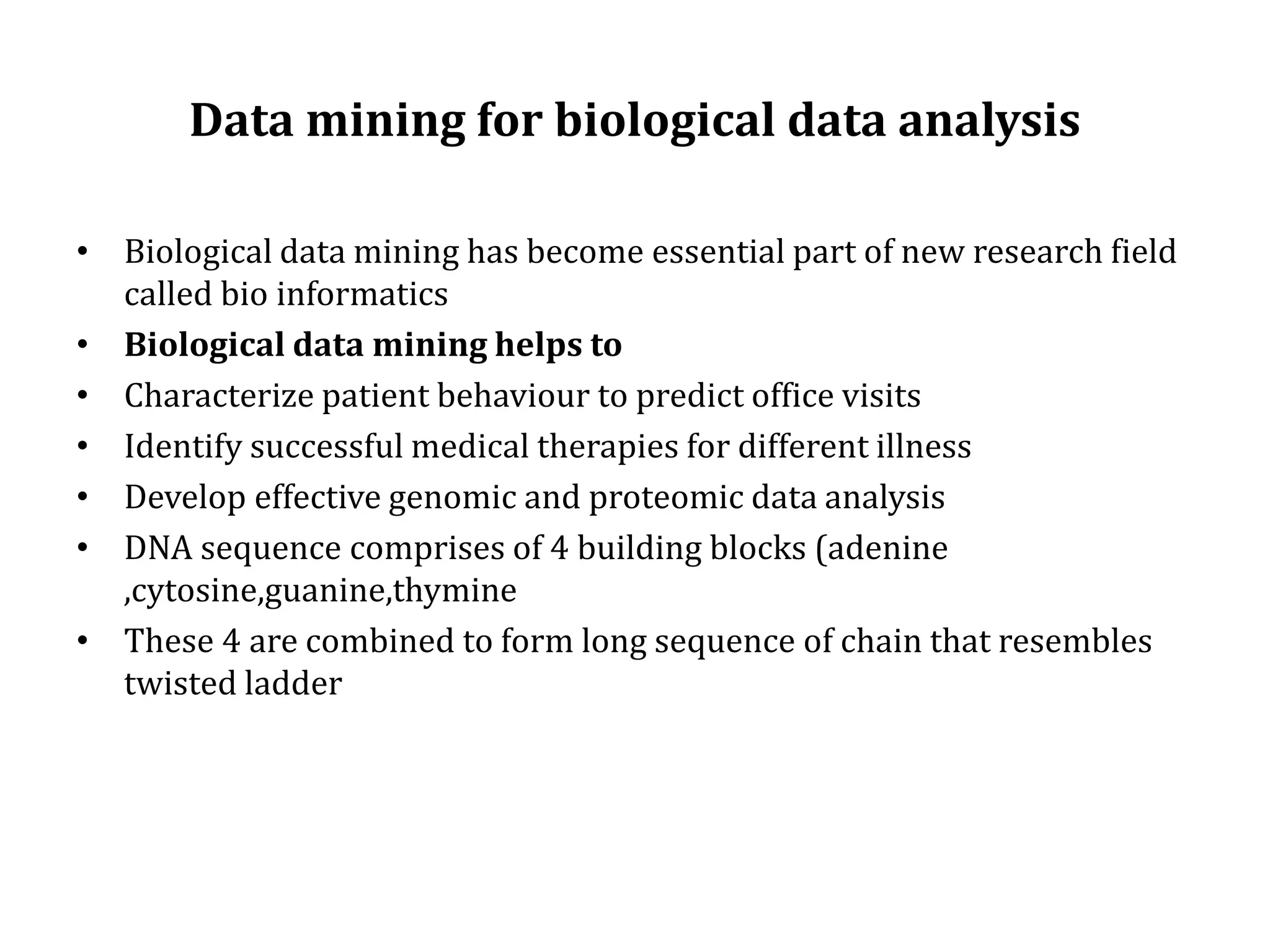
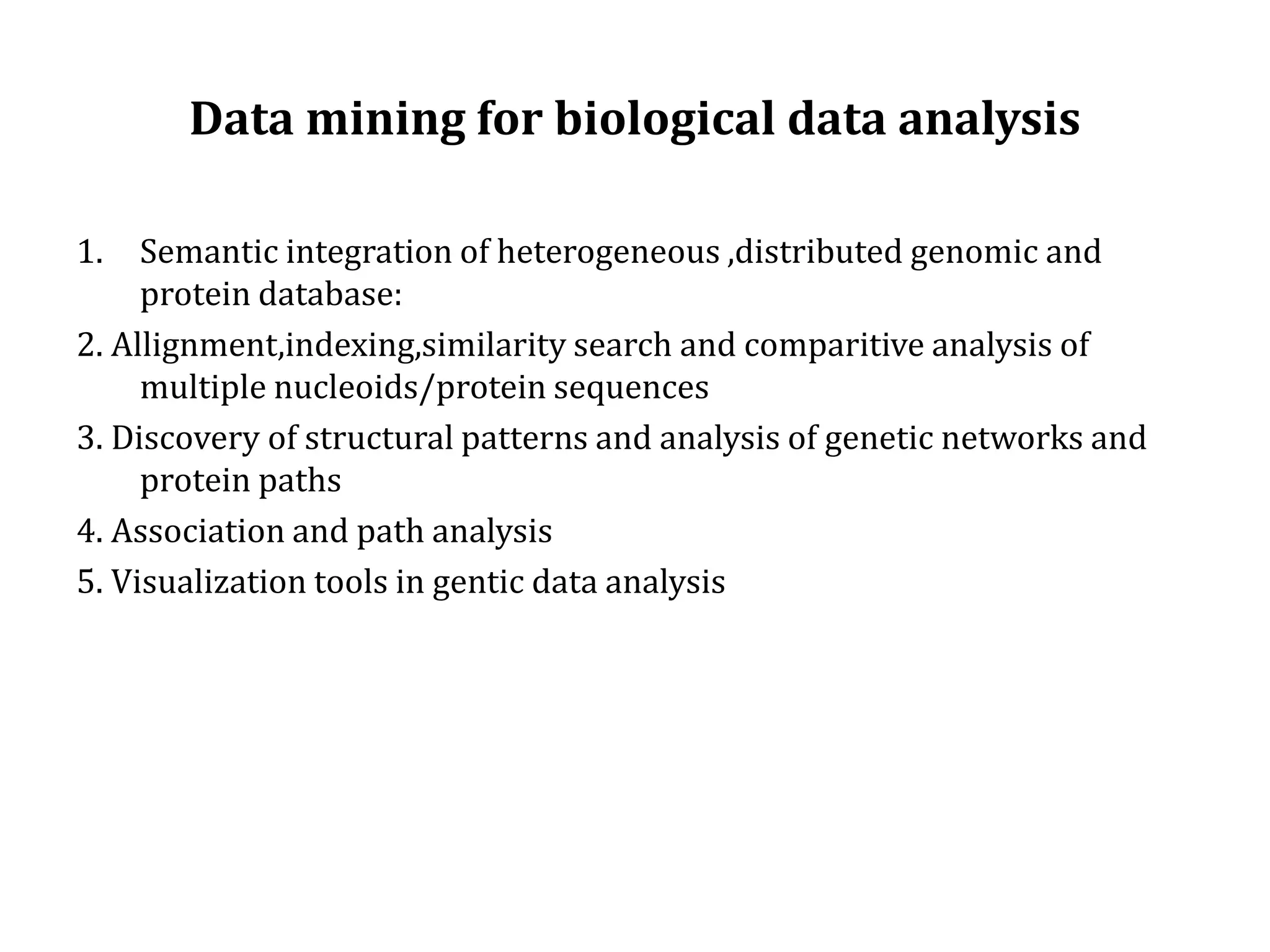
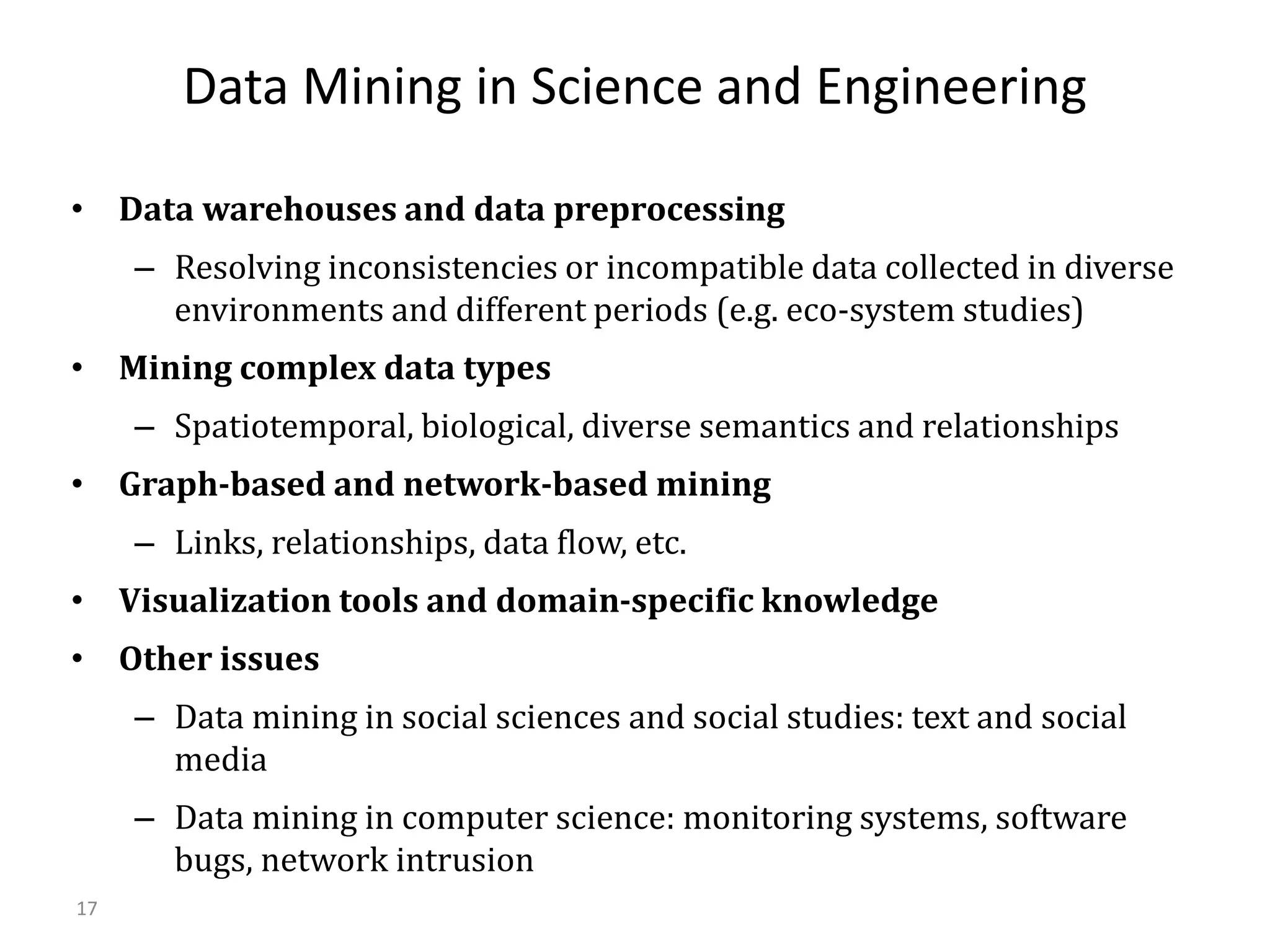
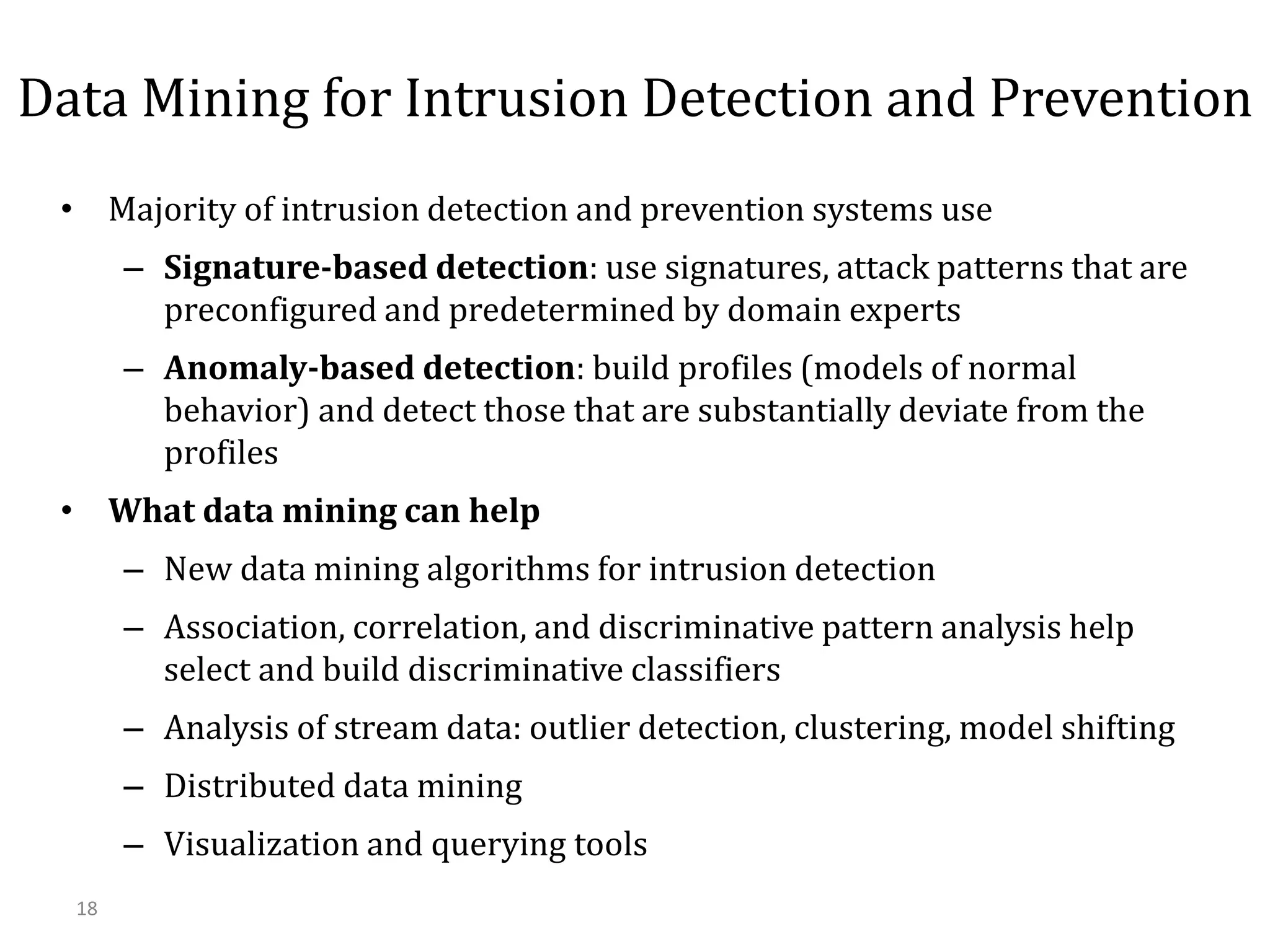
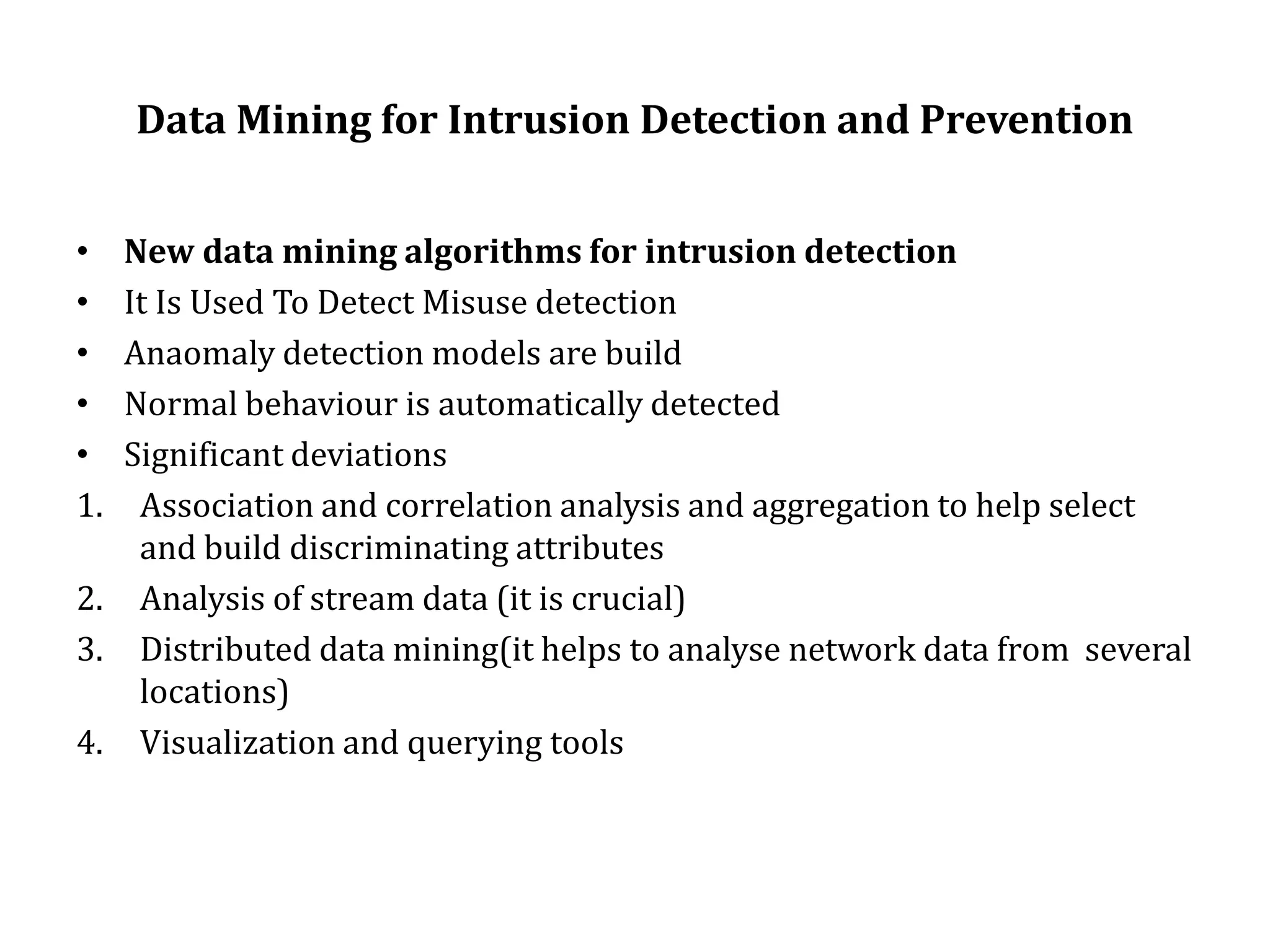
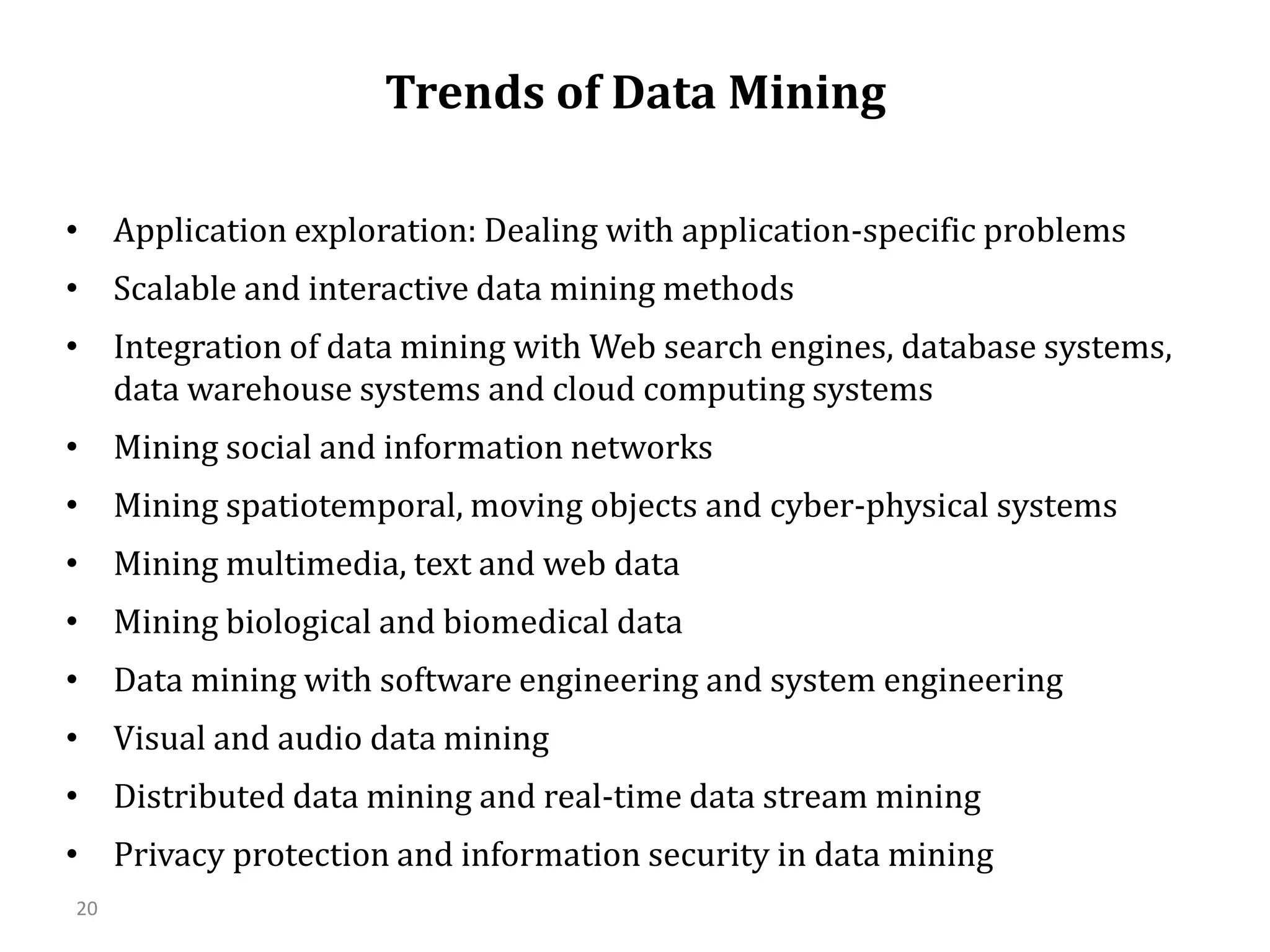
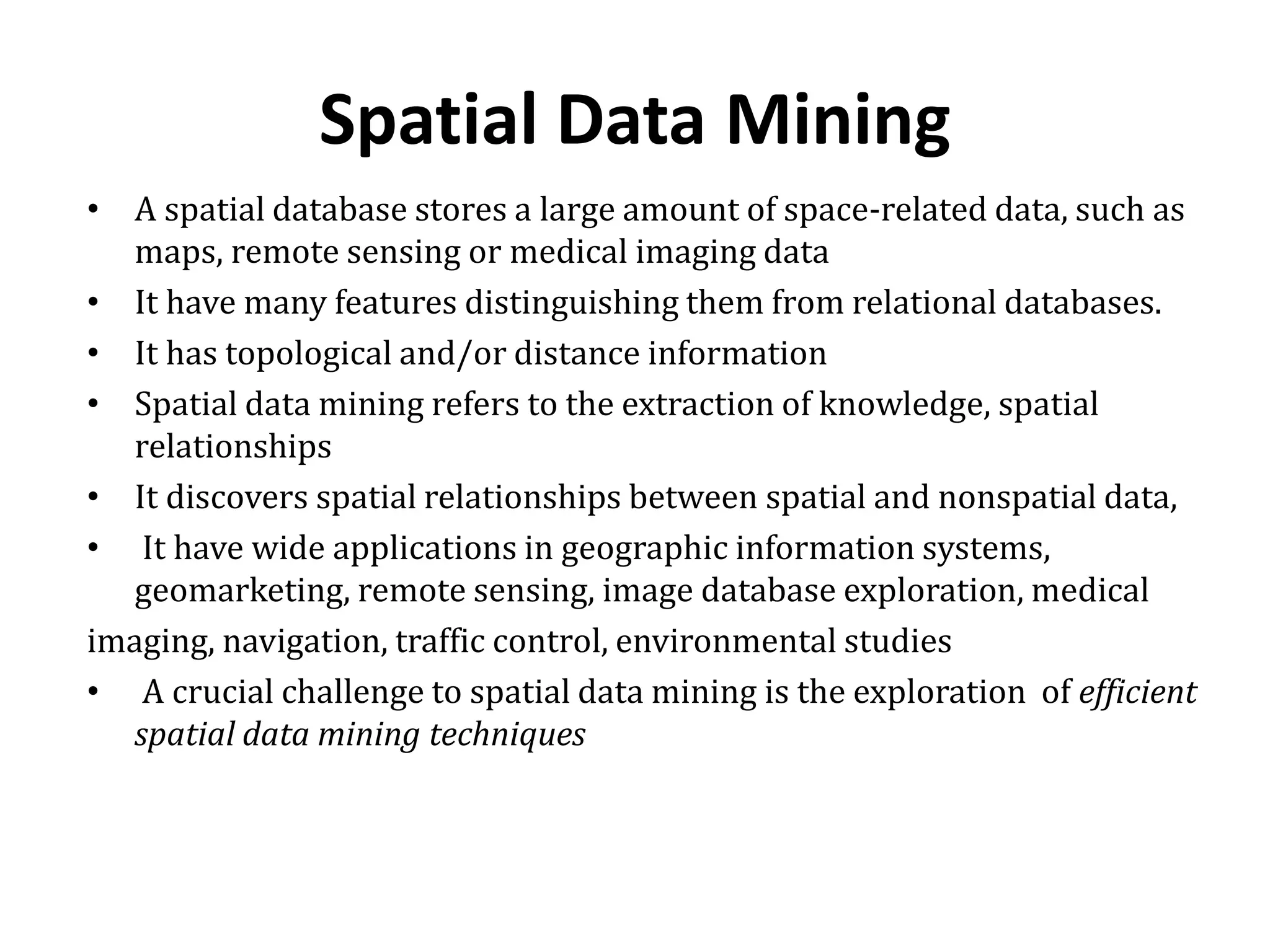
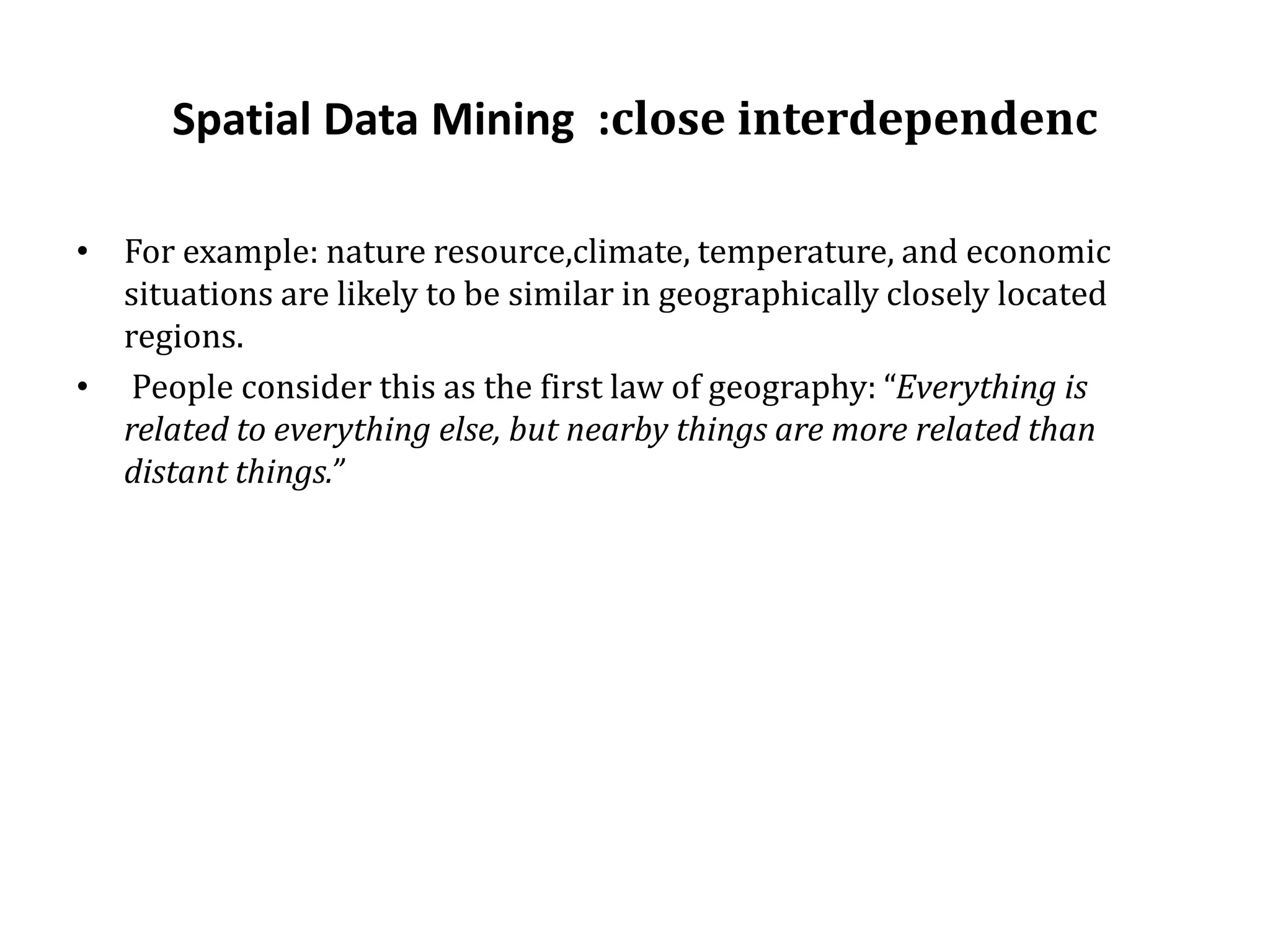
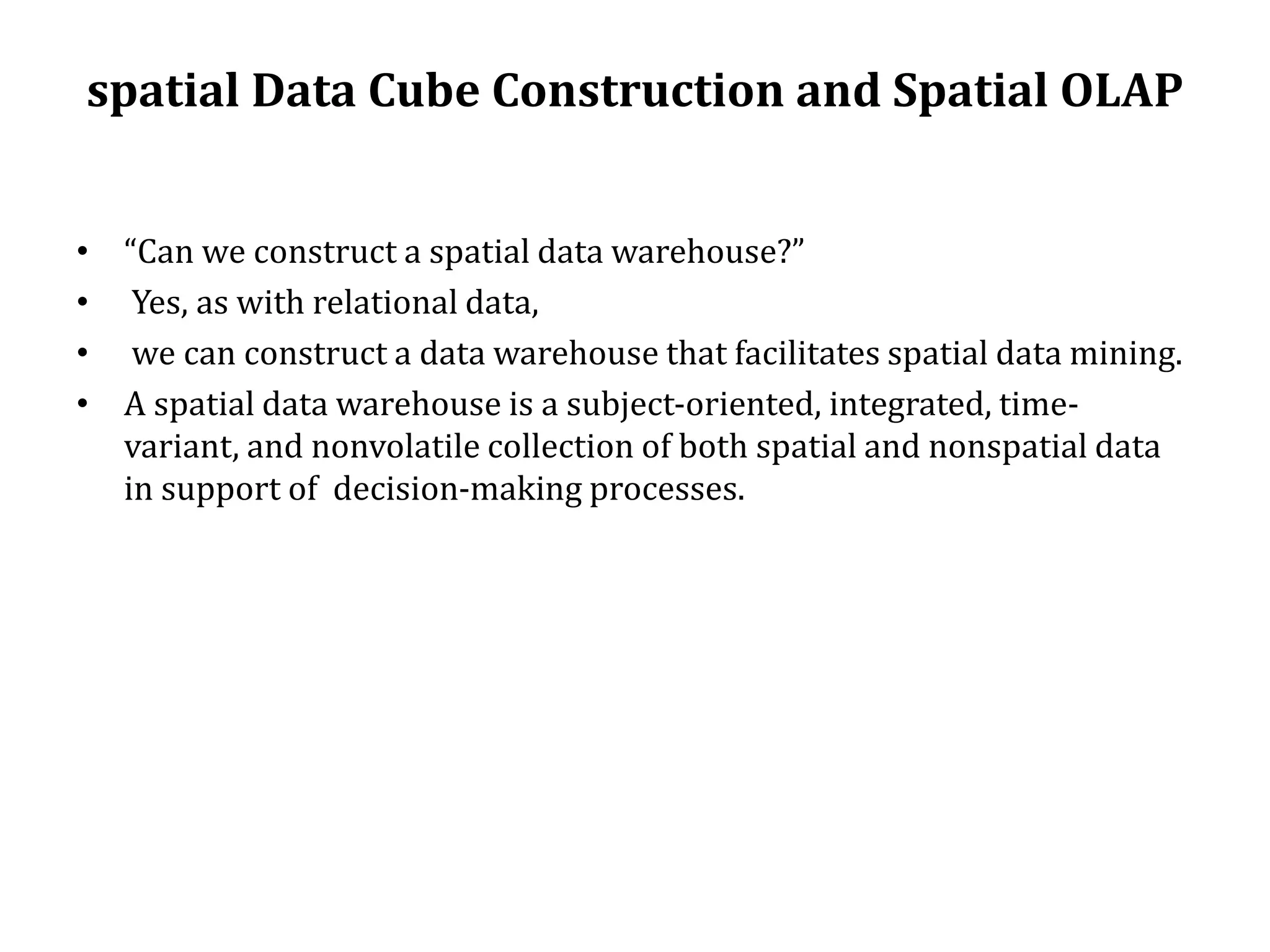
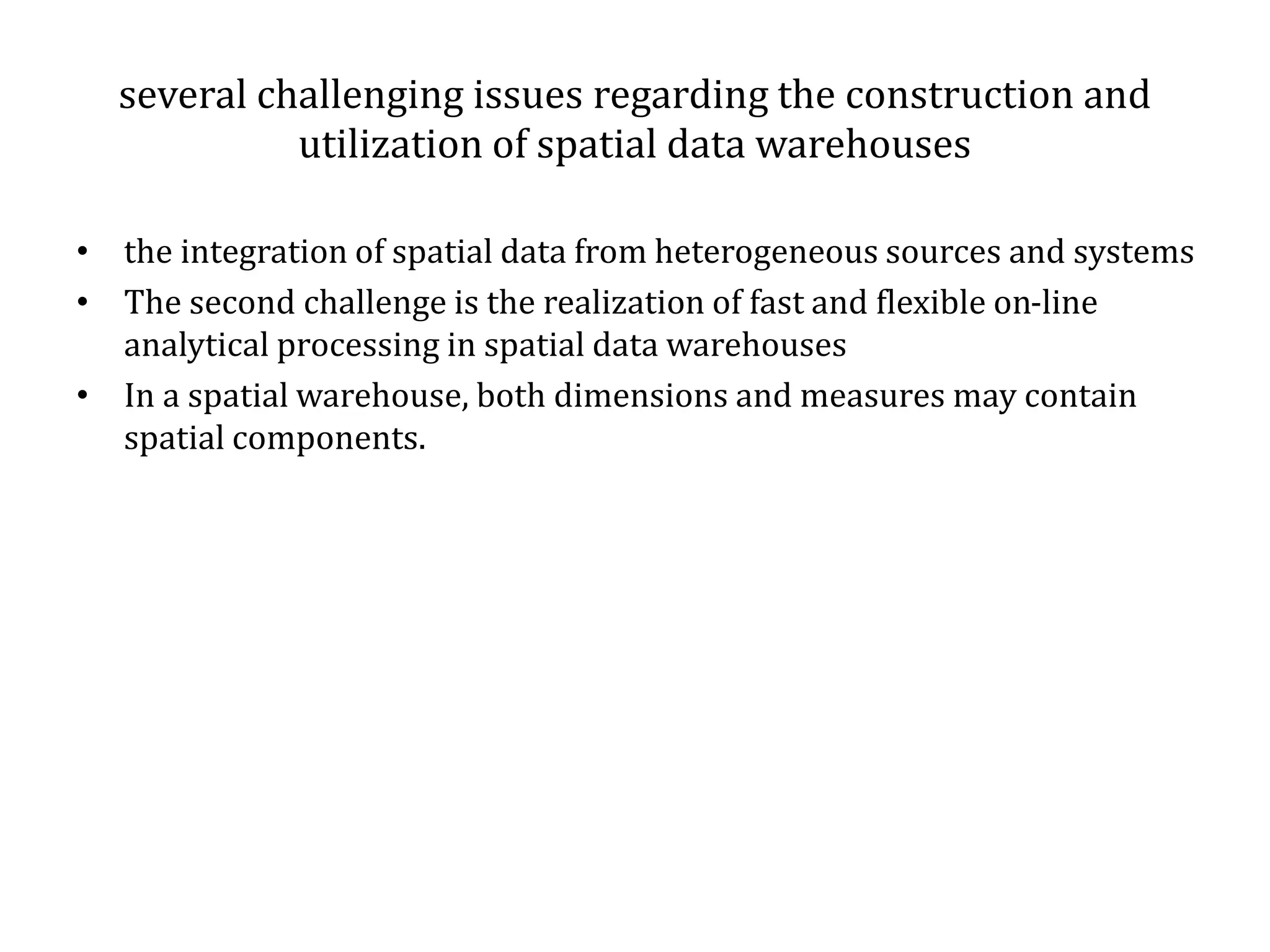
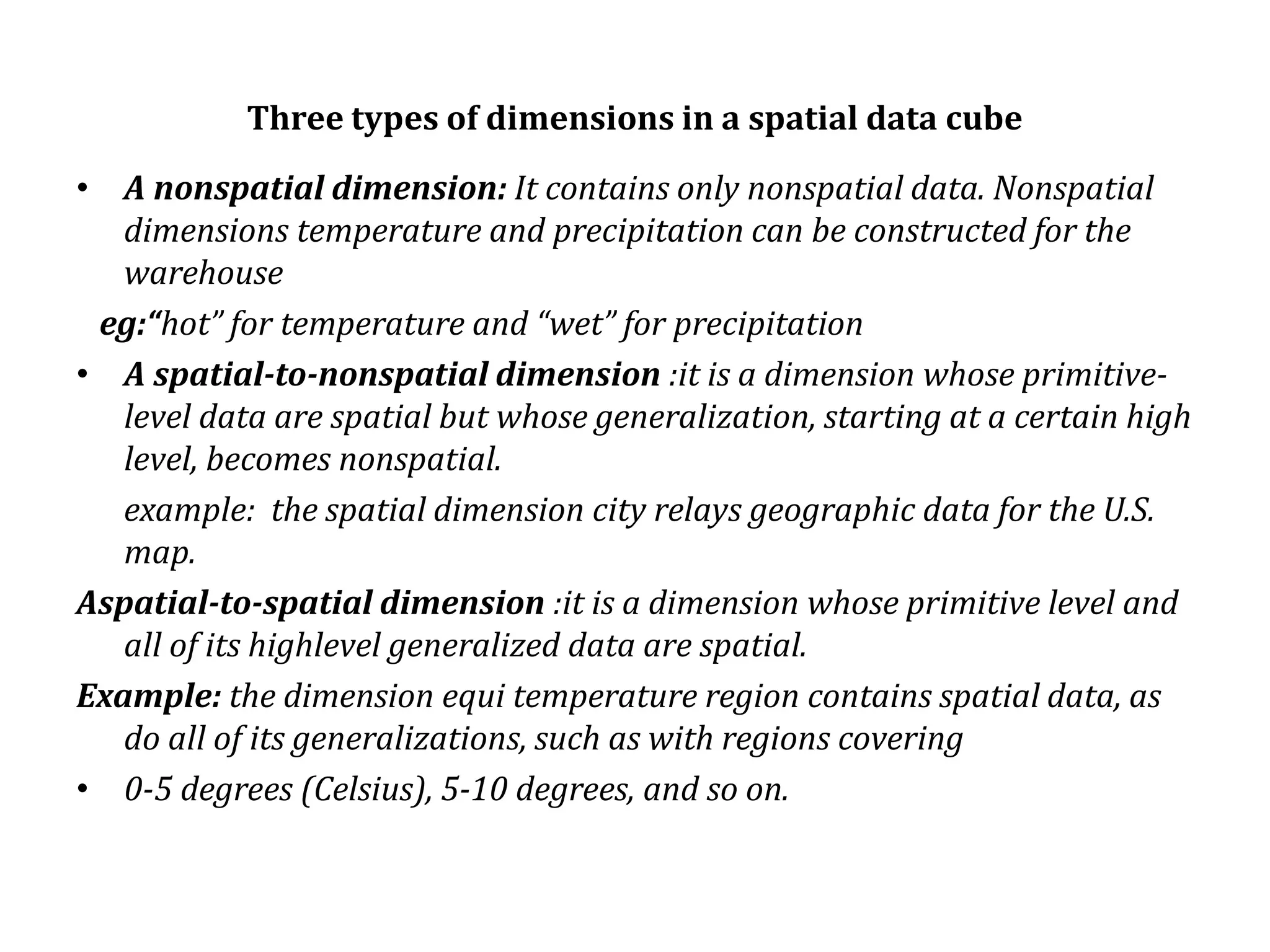
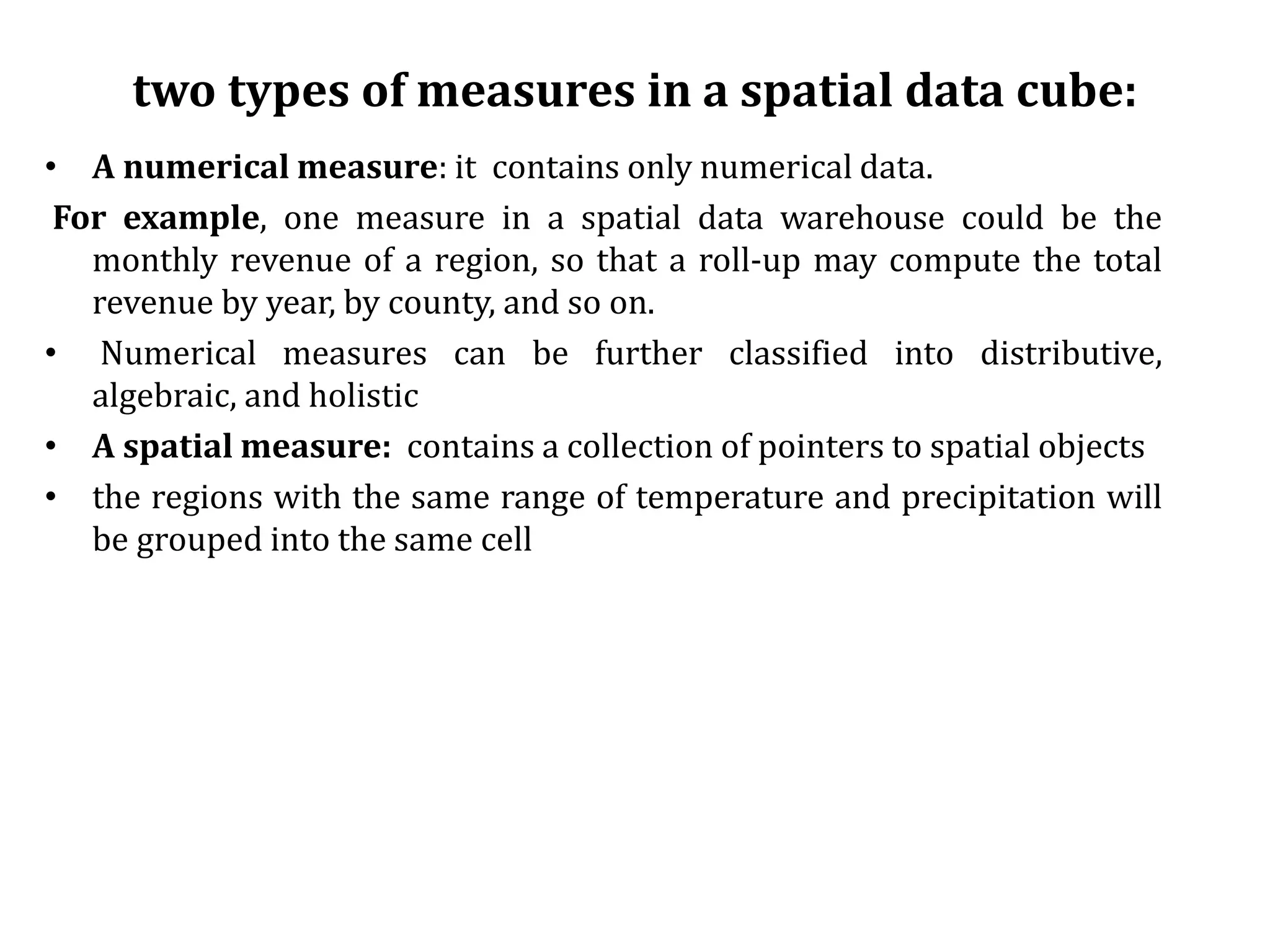
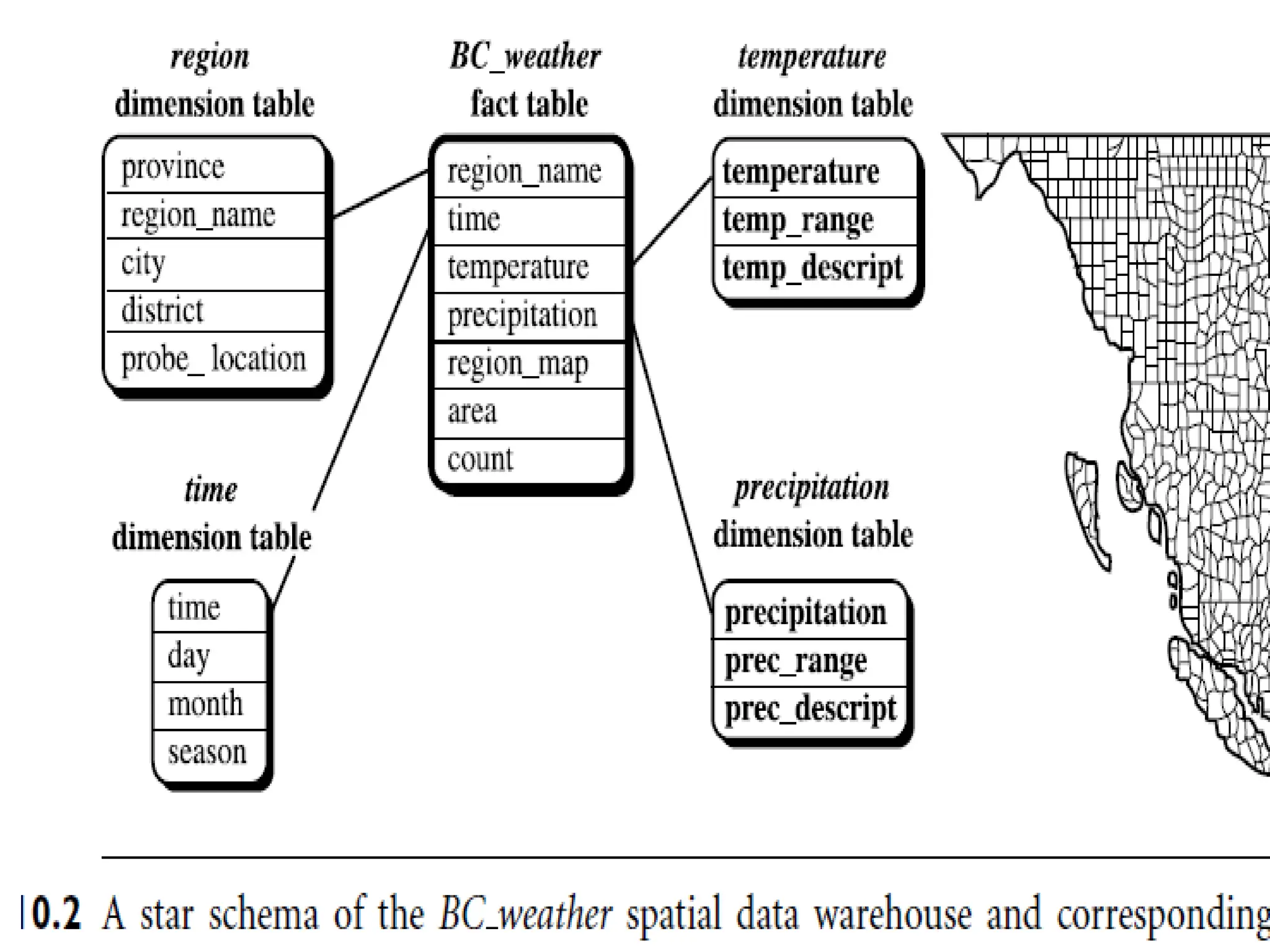
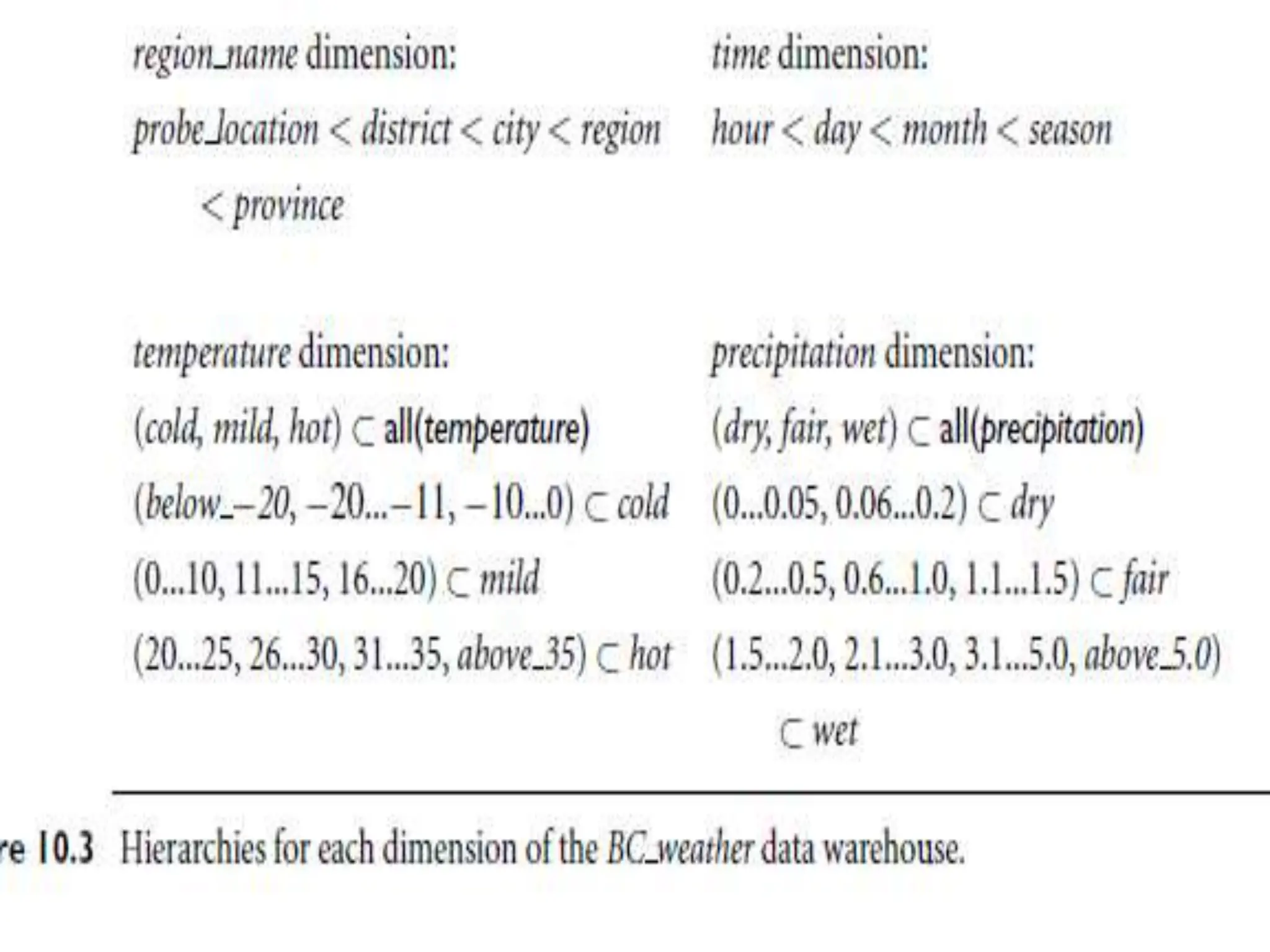
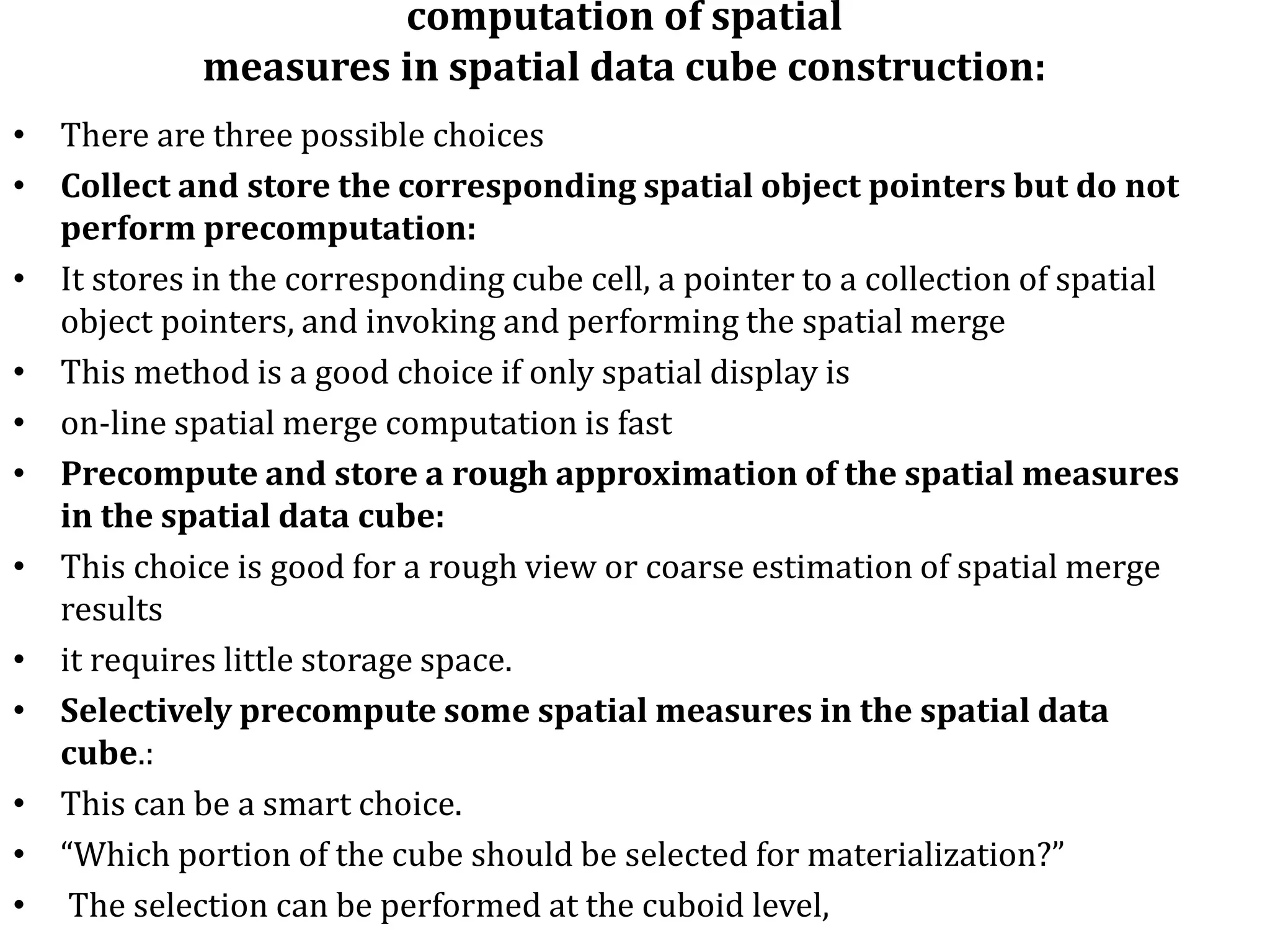
![Mining Spatial Association and Co-location Patterns
• Similar to the mining of association rules in transactional and
relational databases,
• spatial association rules can be mined in spatial databases.
• A spatial association rule is of the form A->B [s%;c%], where A and B
are sets of spatial or nonspatial predicates,
• s% is the support of the rule, and c%is the confidence of the rule
• Eg: is a(X; “school”)^close to(X; “sports center”))close to(X; “park”)
[0:5%;80%].
• This rule states that 80% of schools that are close to sports centers are
also close to parks, and 0.5% of the data belongs to such a case.
• Since spatial association mining needs to evaluate multiple spatial
relationships among a large number of spatial objects, the process
could be quite costly.](https://image.slidesharecdn.com/unit-5-dwdm-240101083847-9373b7f0/75/introduction-to-data-mining-applications-30-2048.jpg)
